Seakeeper 9 Installation Manual (90222-11); S/N 9-233-4900 to Current
Seakeeper 9 Installation Manual (90222-11); S/N 9-233-4900 to Current
1.0 Introduction
Seakeeper 9
Installation Manual
90222, Revision 11
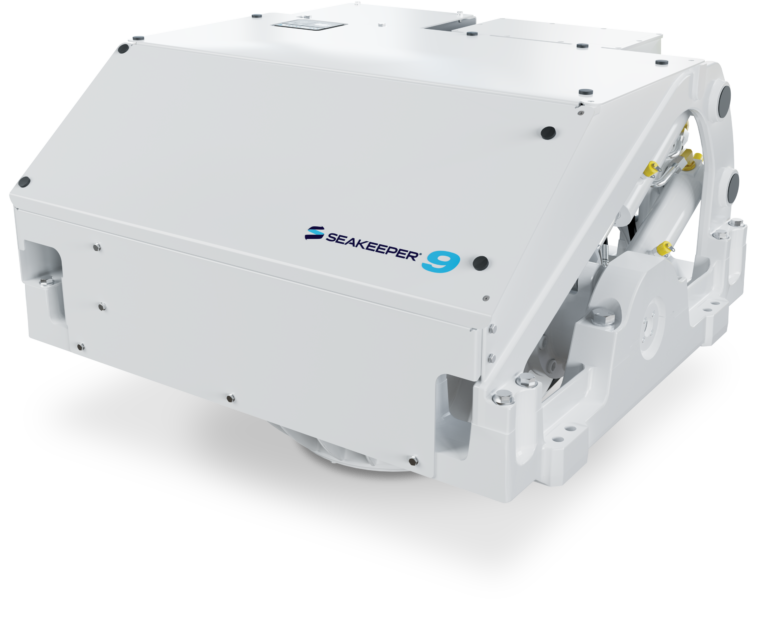
This document is intended to give details and guidance to a boat builder or equipment installer to install the Seakeeper 9 (Serial No. 9-233-4900 to Current).
Reference Documents
1.1 Precautions
- The Seakeeper must only be lifted from the supplied lifting eyes (see Section: Transport and Unpacking).
- The Seakeeper flywheel is supported by precision bearings. While unpacking and lifting the Seakeeper assembly DO NOT drop or impart mechanical shock as damage to bearings could result.
- While handling / installing the Seakeeper assembly, protect exposed hydraulic brake cylinder rods (See Figure 1) from scratches or damage as this could lead to premature seal failure and oil leaks.
- While handling / installing the Seakeeper assembly, do not allow electrical fittings that exit bottom of the Seakeeper enclosure to contact any surface or object as this could damage the fittings and potentially affect the vacuum integrity of the enclosure.
- Exercise care to protect the painted surfaces as damage to finish could lead to early appearance degradation of the installed Seakeeper.
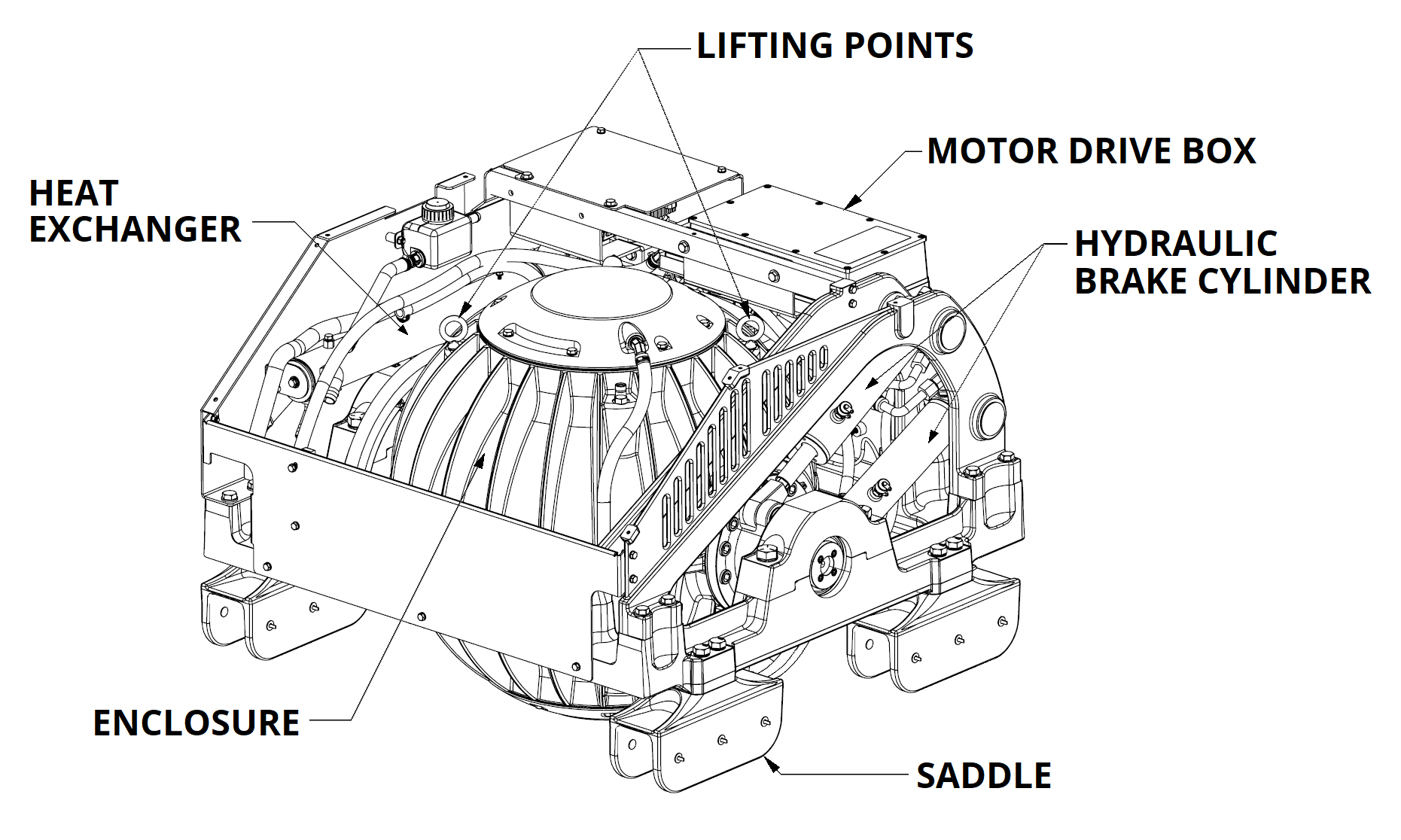
1.1.1 Safety

There is a large torque about the gimbal axis when the Seakeeper is precessing. Seakeeper cover panels are provided to prevent personnel or equipment from contacting the Seakeeper while it is in operation. These covers should not be stepped on or have anything placed on top. The covers should always be in place during operation.
________________________________________________________________________________________
If it is ever necessary to access the Seakeeper while the flywheel is spinning, the Seakeeper must be locked at the display to stop the Seakeeper from precessing.
________________________________________________________________________________________
Stand clear of the Seakeeper and all moving components.
________________________________________________________________________________________
The unit may be started remotely. Assume it could move without warning.
________________________________________________________________________________________
The following must be true before accessing the Seakeeper for maintenance or inspection:
* Input power must be disconnected for at least 10 minutes
* The Seakeeper must be locked
* Flywheel must be at zero speed
1.2 Transport & Unpacking
Reference Documents
1.2.1 Transport
- Use a Seakeeper provided shipping crate for transport, P/N 12269. Overall dimensions of a fully packed crate are 41.5 L x 43.5 W x 36.25 H in. (1.05 L x 1.05 W x 0.92 H m) with a weight of 1463 lbs (664 kg).
- Seakeeper 9 crates can be stacked up to two (2) units high. Only like units should be stacked, i.e., Seakeeper 9 on top of a Seakeeper 9
- Both Air and Ground transport are acceptable.
- Seakeeper shipping crates must be transported in environmental conditions between -4°F and 140°F (-20°C and 60°C).
1.2.2 Unpacking Crate
- Reference Seakeeper Drawing No. 90221 – Seakeeper 9 Hardware Scope of Supply for items that ship with the corresponding Seakeeper model.
- Remove covers, electrical components, display, cables, and misc. items and set aside.
- Remove packing materials that secure Seakeeper assembly inside the crate.
- Attach spreader bar (P/N 11015) to the two lifting eyes located on the top of the Seakeeper enclosure. Stay clear of any other parts on the Seakeeper. The Seakeeper 9 weighs 1,210 lbs (550 kg). See Figure 2 below.
- Remove lag bolts from the Seakeeper foundation and prepare to lift the Seakeeper from the crate.
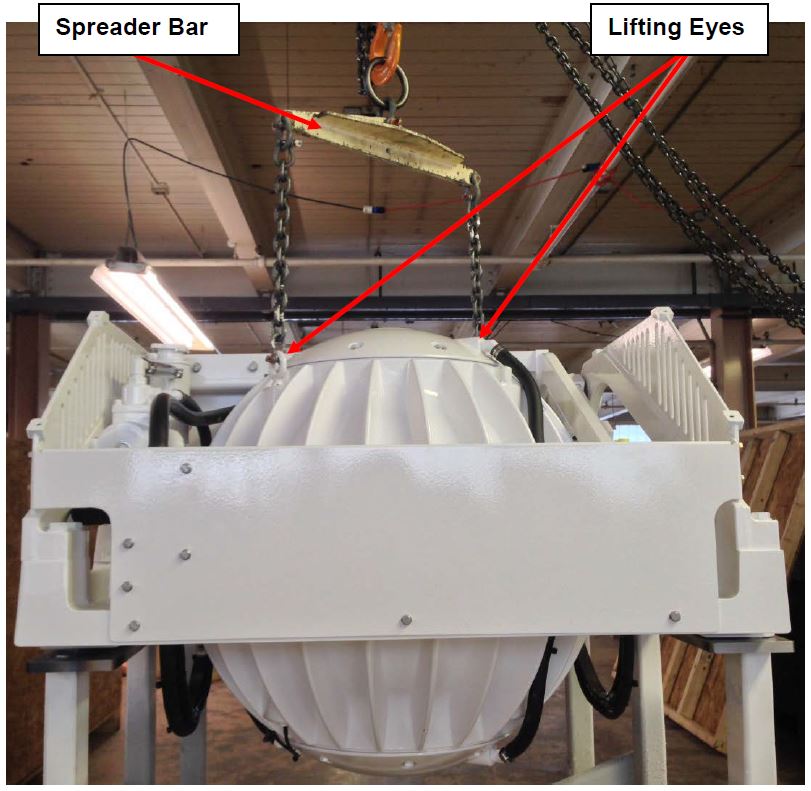
2.0 Mechanical Installation
2.1 Mechanical Installation Introduction
The Seakeeper 9 is capable of producing loads up to 3,842 lbs (17.09 kN) at each of the four mounts. These forces should be considered to be acting simultaneously, fully reversing, and will repeat an infinite number of times. Careful consideration should be given to foundation design to ensure it is capable of transferring these loads into the hull. These loads do NOT include vessel motion accelerations, such as vertical slam loads which can be high for higher speed vessels. The responsible party for designing the supporting structure (boat builder, installer, or hired sub- contractor) must accommodate the above forces plus a reasonable factor of safety. Seakeeper recommends a minimum safety factor of 3.0 (yielding a Safety Margin of 2.0).
There are two methods of installing the Seakeeper 9:
1. Bolt-In Installation
2. Bond-In Installation
It is assumed that the installer is familiar with installing mechanical fasteners in marine structures or using high strength adhesives on aluminum and fiberglass (FRP), and has performed structural analysis to assure the structure to which the Seakeeper mounts can properly transfer the loads the Seakeeper creates into the hull structure. If the installer has any doubt about the ability of the structure to transfer the loads to the hull, then a licensed naval architect or marine engineer should be contacted to perform a structural analysis.
The installer should review the following list of reference drawings to ensure the installation procedure is fully understood.
Reference Documents & Drawings:
- 90225 – Seakeeper 9 Installation Details – Bolt in Method
- 90226 – Seakeeper 9 Installation Details – Bond in Method
- 90253 – Seakeeper 9 Installation Template Kit
- 90384 – Seakeeper 9 Generic Installation Guide
- 90331 – Seakeeper 9 Bolt in Clearances
- 90642 – Seakeeper 9 Bolt-in Kit
- 90643 – Seakeeper 9 Thru-Bolt Kit
2.2 Selection of Installation Location

The Seakeeper should be installed aft of amidships to minimize high acceleration loadings due to hull/wave impacts during operation at high speed or in large waves. If the only possible Seakeeper location is forward of amidships then the installer should have Seakeeper review the installation location prior to finalizing the design.
Seakeeper can only assess installation location regarding its impact on Seakeeper operation and serviceability. Seakeeper cannot determine how the installation location will affect the vessel static or directional stability other than cyclic roll reduction. The Installer is responsible for considering the Seakeeper’s effect on the Center of Gravity location, trim, overall stability, and performance of the vessel.
The Installer is solely responsible for ensuring that the Seakeeper is properly located and installed on the vessel foundation with an adequate margin of safety for the specified design loads and vessel operating characteristics.
Selection of mounting location of the Seakeeper should consider the following desirable features:
- Adequate service access for scheduled maintenances and overhaul of the Seakeeper 9 is required. See Figure 4 and Drawing No. 90225 – Seakeeper 9 Bolt-In Installation Details for service clearance requirements.
- The Seakeeper should be installed in a dry space to minimize effects of corrosion.
- Clearance for all recommended scheduled maintenance and any repairs that may be necessary (See Figure 3).
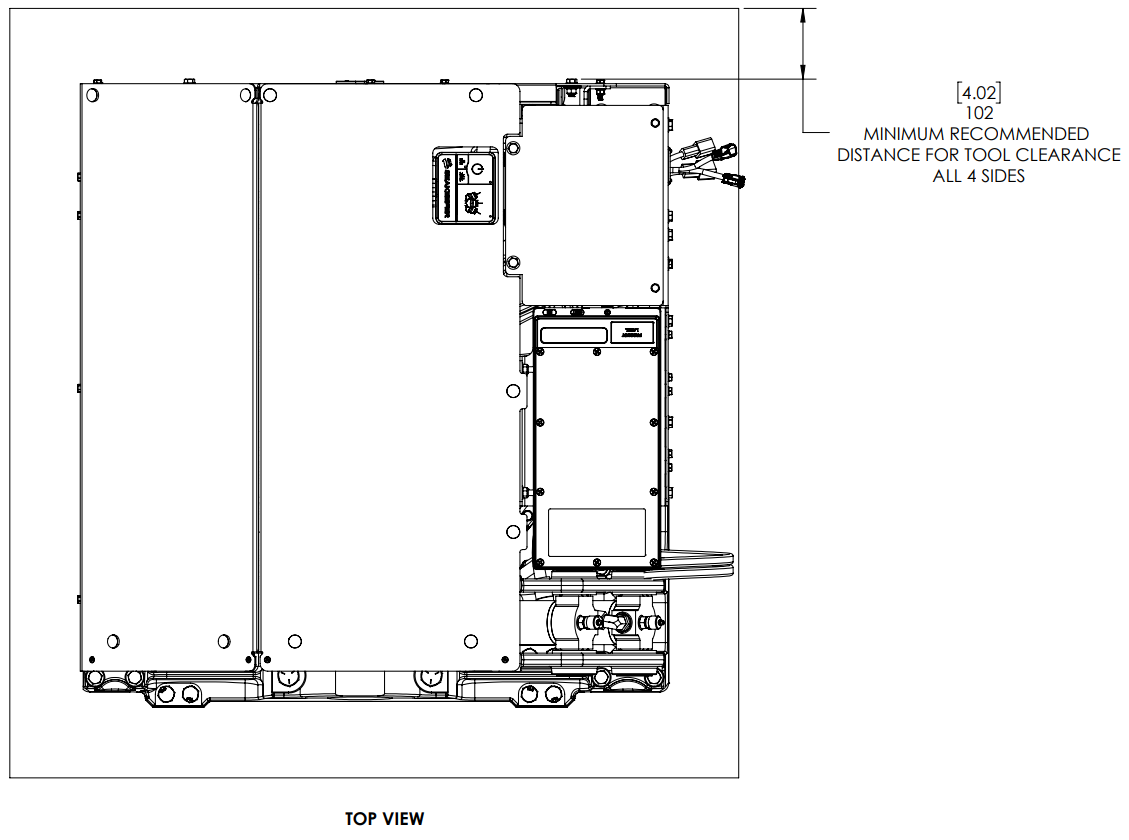
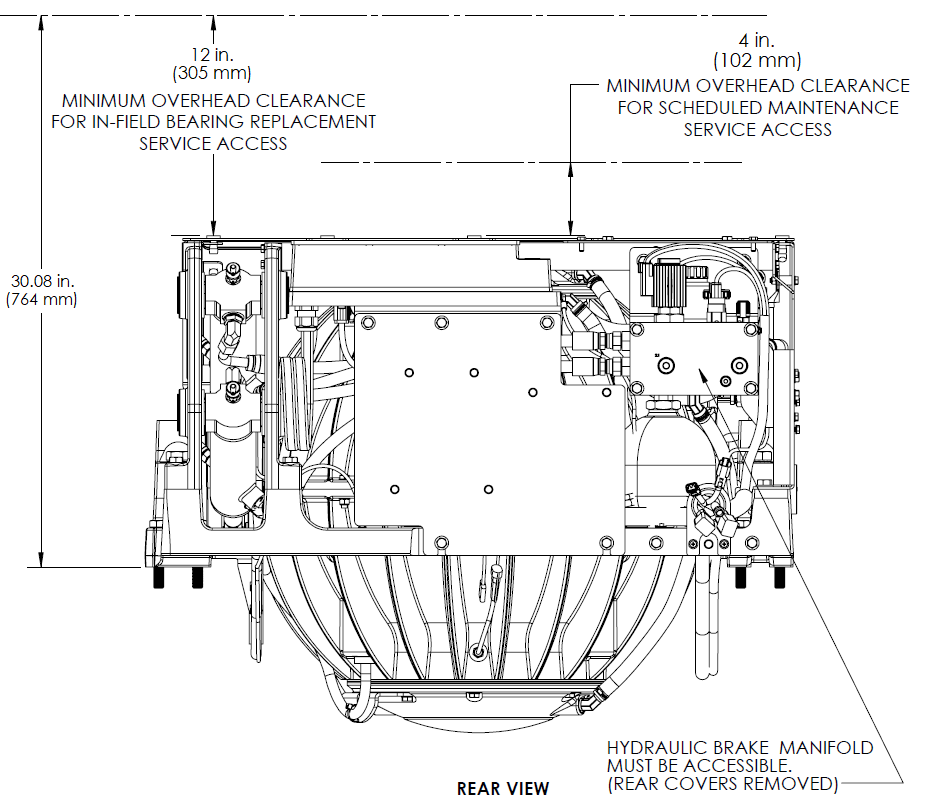
VIEWS SHOWING RECOMMENDED CLEARANCES AROUND THE SEAKEEPER FOR USE OF HANDTOOLS, EASE OF MAINTENANCE, INSTALLATION, AND PROPER OPERATION.
Figure 3 – Seakeeper 9 Installed Clearance Considerations
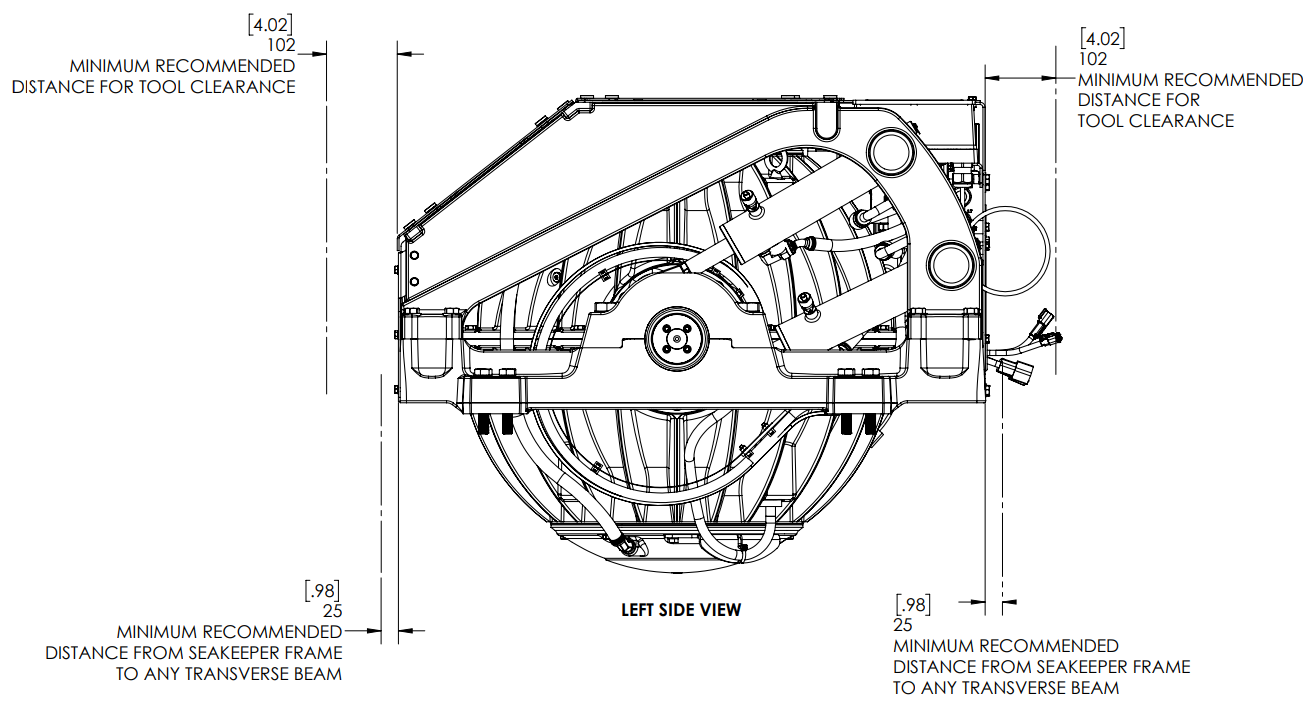
(Measurements in brackets are in inches; measurements not in brackets are in millimeters)
Refer to Figure 4 for required clearances to transverse beams. If a transverse beam is located under the forward brace, it must be 1 in. (25 mm) from the edge of the Seakeeper Frame to provide the necessary clearance for the swing of the motor power cable during the Seakeeper’s precession. Clearances aft of the Seakeeper are shown to provide access for regular scheduled maintenance.
2.2.1 Overhead Clearance Considerations
Access above the Seakeeper 9 must be considered for maintenance and service space. Figure 5 shows space considerations around and above Seakeepers installed below deck surface.

2.2.2 Noise/Soundproofing
Seakeeper 9 noise has been measured under steady state conditions (no wave load) in Seakeeper‘s Engineering Lab and in our Factory Demo Boat. The steady state noise is typically <70 dCB at 1 meter. As the frequencies emitting the highest sound pressures are low (like other marine machinery), it is recommended that the Seakeeper be installed in an enclosed space such as a machinery space, lazarette, or bilge. If additional noise reduction is needed, sound proofing insulation can be used in the space around the Seakeeper unit.
2.3 Selection of Installation Method
The Seakeeper 9 can be affixed to the hull structure using two methods 1) Bolt-In installation or 2) Bond-In installation. See figures below.
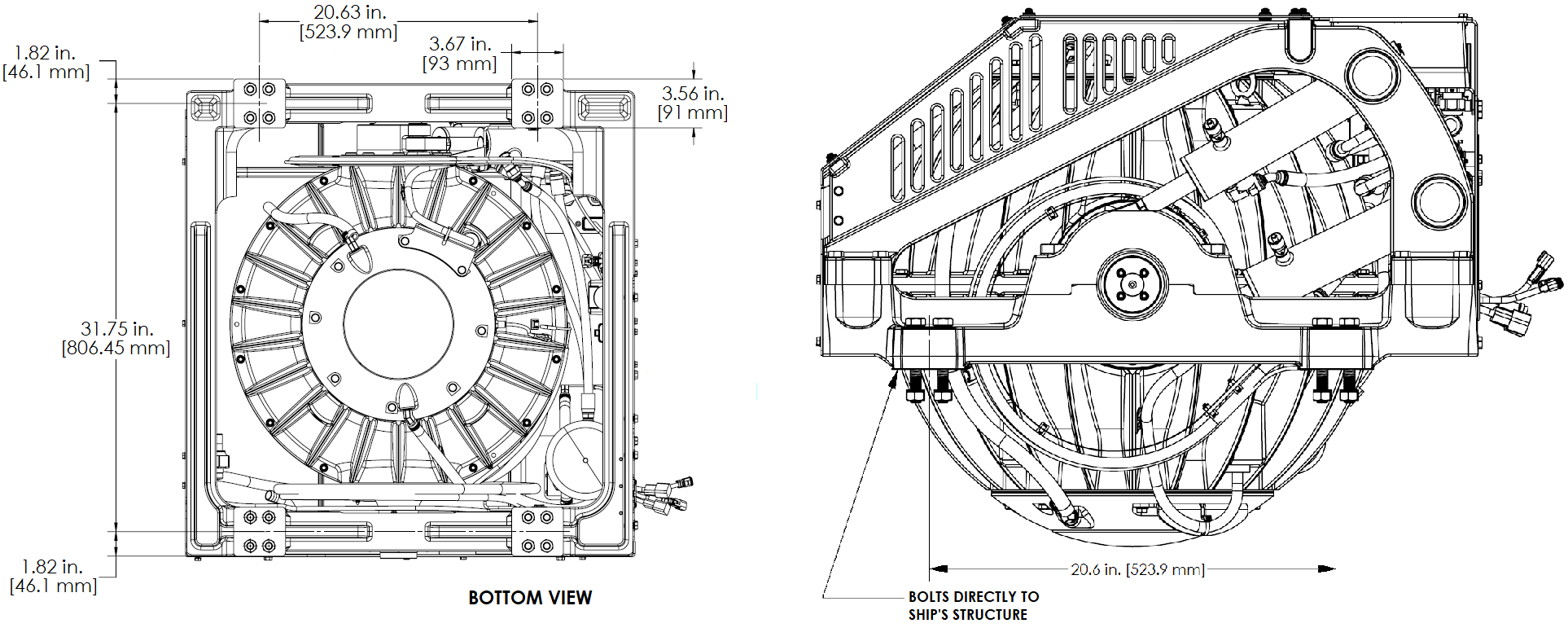
Option 1 would be applied when a metal structure or laminated metal plates are available for attachment. The Seakeeper 9 frame would fasten directly to hull structure or plates using isolation gaskets for metal-to-metal contacts and 16x M14X2.0 fasteners. Depending on the structure to which the Seakeeper is fastened, blind threaded holes or thru-bolting can be utilized.
Marine-grade aluminum (6061-T6, or equivalent) bar stock is recommended for both blind hole tapping and thru-bolt installations. For blind-hold installations, helical threaded inserts (Helicoils) with a length of 1.5 x bolt-diameter (21 mm) are required to ensure the strength of the tapped holes exceeds that of the mounting boats (Grade 10.9) which ensures a secure bolted connection between the Seakeeper and hull structure.
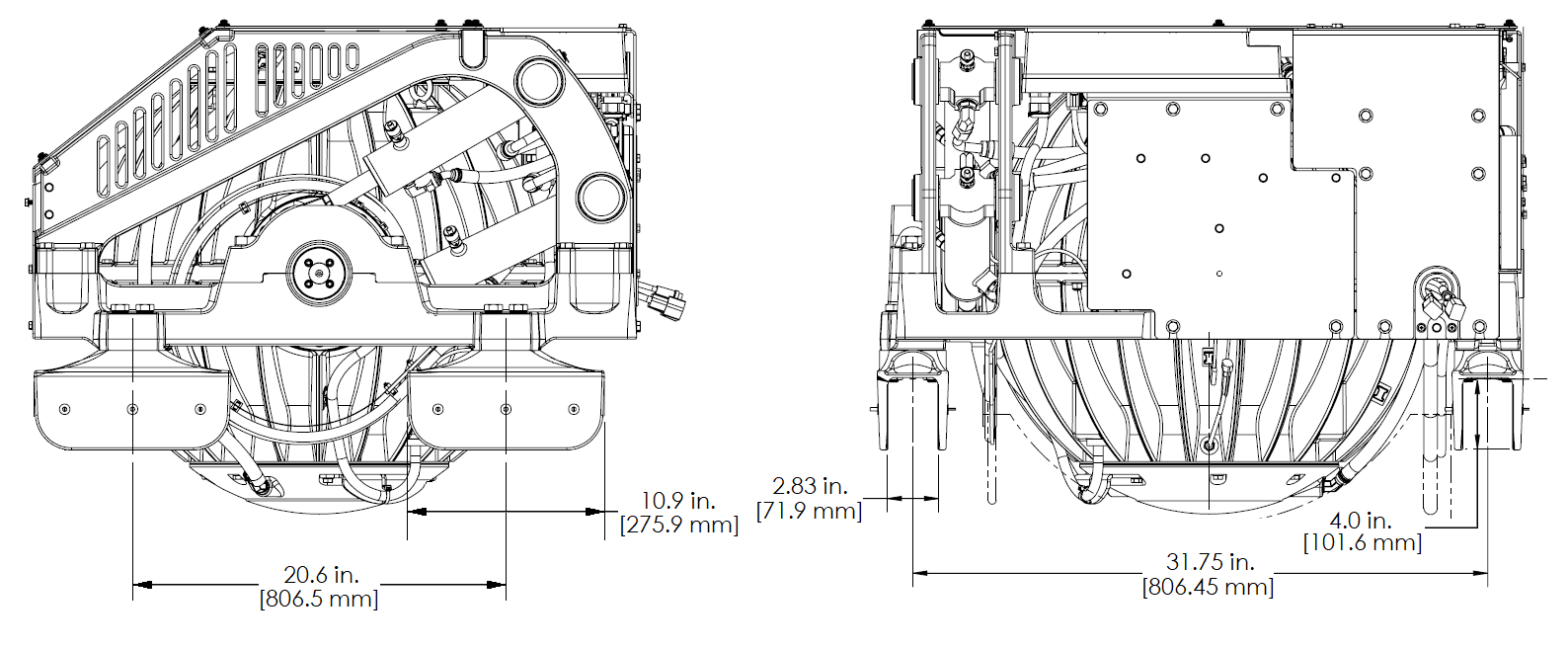
Option 2 would be most commonly used on a hull constructed of glass reinforced plastic (GRP) or fiberglass. For this option, four 11 in. (280 mm) long by 4 inch (102 mm) deep saddles are bonded to properly spaced and prepared structural members that are an integral part of the hull structure. Seakeeper recommends using a structural adhesive with a lap shear strength of 2000 psi (13.8 MPa) or greater. Careful consideration should be exercised by the installer while selecting the appropriate adhesive. Compatibility with the Seakeeper’s cast aluminum A356-T6 saddles, hull structure, and pot life are three important factors to consider. Proper surface preparation in accordance with adhesive manufacturer’s recommendations prior to installation is critically important. Recommended adhesives can be found in Seakeeper Technical Bulletin 90382 – Structural Adhesive Recommendations.
2.4 Bolt-In Installation
2.4.1 Preparation of Vessel Structure
Seakeeper provided mounting hardware is intended to apply to typical installation arrangements. However, each installation, especially custom aftermarket foundations, should be thoroughly reviewed to ensure the provided hardware meets the required thread engagement for the Seakeeper unit being installed. The mounting bolt thread engagement requirements are outlined in the Installation Manuals and Installation Details Drawings for each Seakeeper model. This also applies to Seakeeper model adapter kits and OEM built frames where the bolt hole depth should be checked to ensure the bolts will not bottom, preventing the bolts from achieving the intended preload.
When the Seakeeper provided hardware is not appropriate, the bolt specification (diameter and thread pitch) and grade should be matched in the required length and used with the Seakeeper provided washers. Mounting bolts should always be torqued to the Seakeeper specification. All Seakeeper provided bolts are metric course thread. Hardware specifications are also listed in the Installation Manuals and Installation Details Drawings.
Refer to Seakeeper Drawing No. 90225 – Seakeeper 9 Bolt-In Installation Details. Important dimensional and load information is given in this drawing that will impact the design details of the structure that will receive the Seakeeper. It is assumed that a proper structural analysis has been performed for the hull structure to which the Seakeeper will be fastened to ensure proper strength margins for the loads the Seakeeper will create during operation. Seakeeper recommends a safety factor of 3.0.
The Seakeeper supporting structure should be parallel to the vessel waterline, with up to 2 degrees allowance for trim.
In addition, the four areas on top of the structure on which the Seakeeper frame and isolation gaskets will rest, need to be co-planar within .06 in. (1.5 mm) to minimize potential distortion of Seakeeper support frame when installed. The isolation gaskets are only used when the Seakeeper 9 is mounted to a dissimilar metal structure.
Seakeeper provides an installation template kit, P/N 90253, which contains plates that match the mating surfaces of the four feet located on the Seakeeper’s frame. These plates have 4 holes located at the same centers as the mounting holes on the Seakeeper. The fixture locates the hole patterns at the proper spacing both in the forward-aft direction and the port-starboard direction. See Figure 6 and 5 below. Once assembled, the fixture can be used to check clearances and alignment of the hull structure.
Note: Do NOT use the installation fixture to establish Seakeeper envelope dimensions. Refer to Drawing No. 90225 – Seakeeper 9 Bolt-In Installation Details, for envelope dimensions. A 3-D model of the Seakeeper is available on the Seakeeper Technical Library (www.seakeeper.com/technical-library/) to aid in designing the Seakeeper foundation and the space around the Seakeeper.
NOTE: MAKE SURE NO OBSTRUCTIONS FROM THE HULL STRUCTURE CAN BE SEEN WITHIN THE INSIDE OF THE INSTALLATION TEMPLATE KIT (INSIDE THE MARKED RED LINES) AS SEEN IN FIGURE 6. REFERENCE SEAKEEPER DRAWING NO. 90225 – SEAKEEPER 9 BOLT-IN INSTALLATION DETAILS.
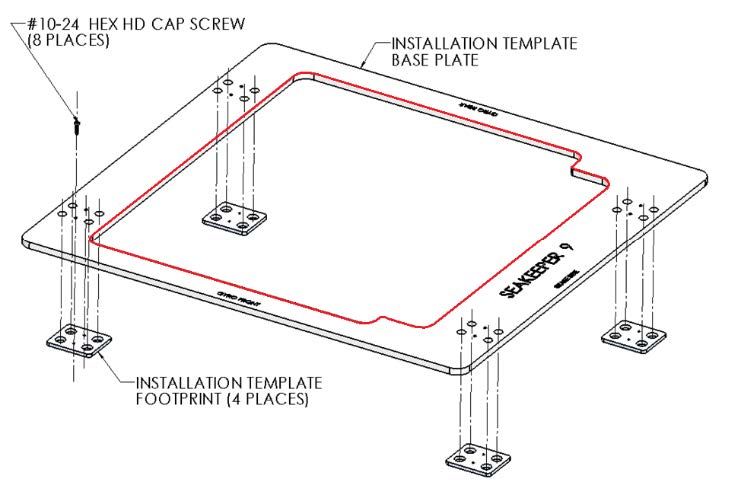

CAUTION: Tight clearances from cable guide bands to hull structure.
See above figure for dimensions and reference Seakeeper Drawing No. 90225 – Seakeeper 9 Bolt-In Installation Details for complete Seakeeper 9 envelope.
2.4.2 Transfer of Holes to Boat Structure
- Lower assembled fixture onto hull structure, see Figure 8.
- The four areas where the feet of the Seakeeper will rest should be coplanar to within .06 in. (1.5mm). See figure below.
- Align fixture in desired location and transfer holes from fixture plate to the hull structure by transfer punch. Note: Holes in fixture plate are ø 0.55 in. (14 mm).
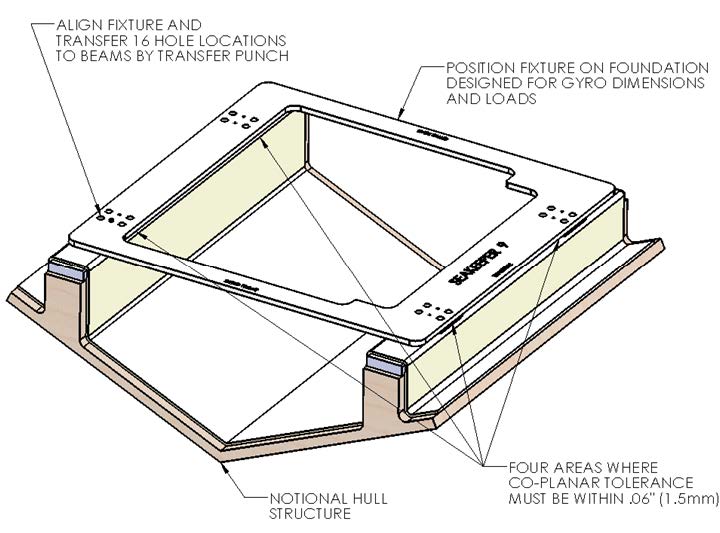
2.4.3 Bolt-in Installation

Blind-Hole Instructions
- Remove Template Fixture and drill SIXTEEN (16) 0.571 in. ø (14.5 mm ø) holes perpendicular to the vessel structure to a minimum depth of 0.84 in. (21 mm). Take special care to drill perpendicular to mounting surface.
- Tap drilled holes for M14-2.0 threaded inserts.
- Install 16 M14-2.0 x 1.5 in. D (21 mm length) locking threaded inserts into holes in hull structure at drilled and tapped locations using threaded insert manufacturer provided installation tool.
- Remove threaded insert prong / tag after threaded inserts are installed.

Through-bolt Instructions
Remove Template Fixture and drill sixteen(16) 0.59 IN. (15 mm) ø perpendicular to the vessel structure. Take special care to drill perpendicular to mounting surface. A drill guide is recommended.
2.4.4 Installation of Seakeeper
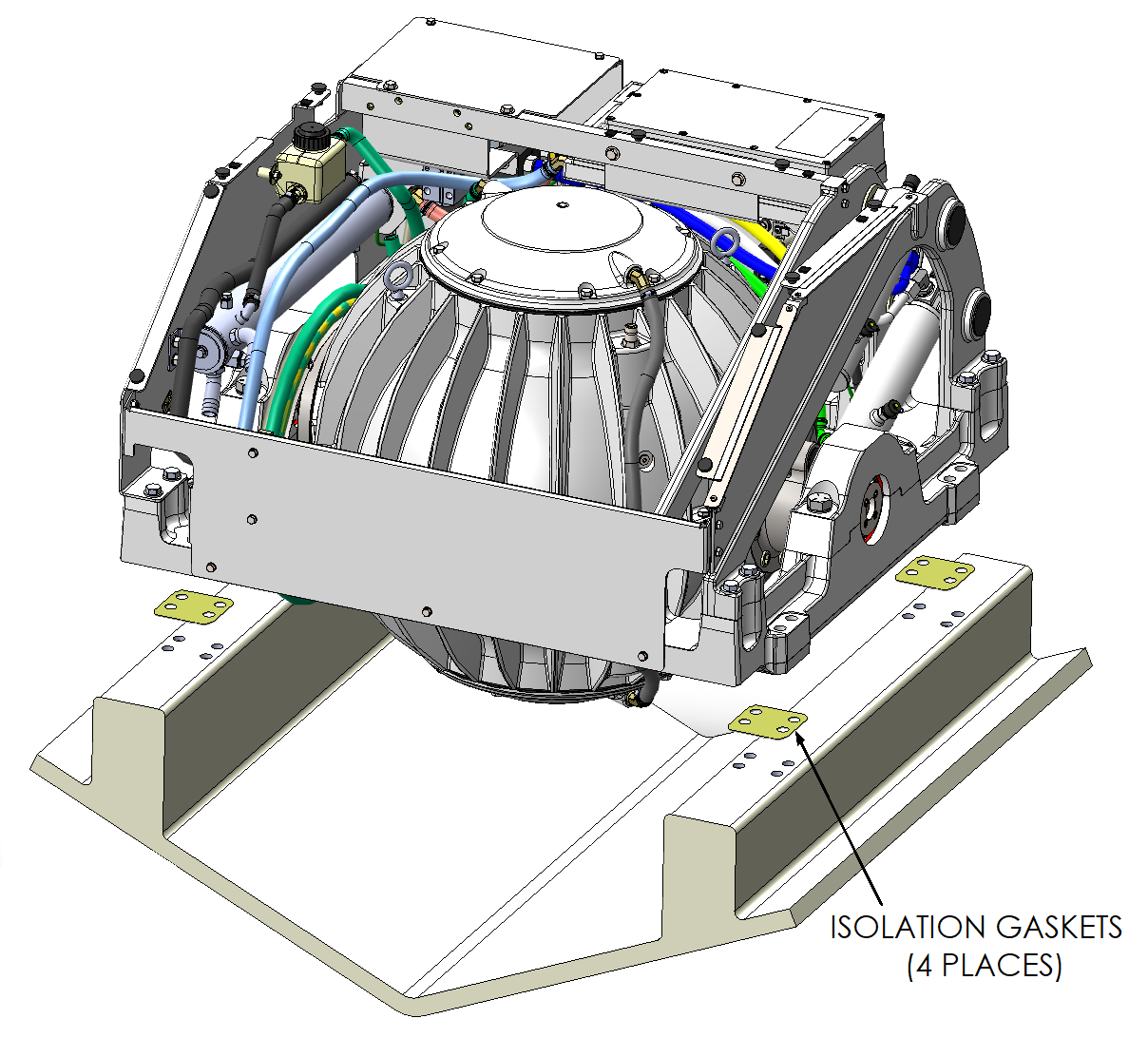
- Lower Seakeeper into position onto the hull foundation beams and align over drilled holes. Apply a small bead of marine sealant (e.g., SILI-THANE 803 or equivalent) between mating surfaces of Seakeeper frame and hull structure to prevent moisture wicking into bolt holes.
- For dissimilar metal foundations, locate and position the 4 isolation gaskets (P/N 10860) onto foundation beams and apply a small bead of marine sealant (e.g., SILI-THANE 803 or equivalent) between both mating surfaces of each isolation gasket where it contacts the beam and Seakeeper.
- Install Mounting Bolts, as shown in Figure 10:
- For Blind-Hole installations (P/N 90642 – Seakeeper 9 Bolt-In Installation Kit), install the Seakeeper supplied Grade 10.9, M14-2.0 x 85 mm fasteners or alternative Grade 10.9, M14-2.0 bolts to maintain a minimum thread engagement of 0.90 in. (23 mm). Apply a moderate coat of nickel-based anti-seize (e.g., SAF-T-EZE nickel-based anti-seize, SBT-4N or equivalent) to the threads of each bolt and include a small bead of marine grade sealant (e.g., SILI-THANE 803 or equivalent) under each bolt head and washer before installation.
- For Through-Bolt Installations (P/N 90643 – Seakeeper 9 Through-Bolt Installation Kit), install the Seakeeper supplied Grade 10.9, M14-2.0 x 100 mm fasteners or alternative Grade 10.9, M14-2.0 bolts to maintain a minimum of 2 threads protruding past nut. Apply a moderate coat of nickel-based anti-seize (e.g., SAF-T-EZE nickel-based anti-seize, SBT-4N or equivalent) to the threads of each bolt and include a small bead of marine grade sealant (e.g., SILI-THANE 803 or equivalent) under each bolt head and washer before installation.
- Torque all fasteners to 100 ft-lbs (135.6 N-m).
- New bolts, matching the Seakeeper specification, must be used for each installation and reinstallation that meet the requirements listed above.
- Proceed to electrical and cooling portion of the installation.
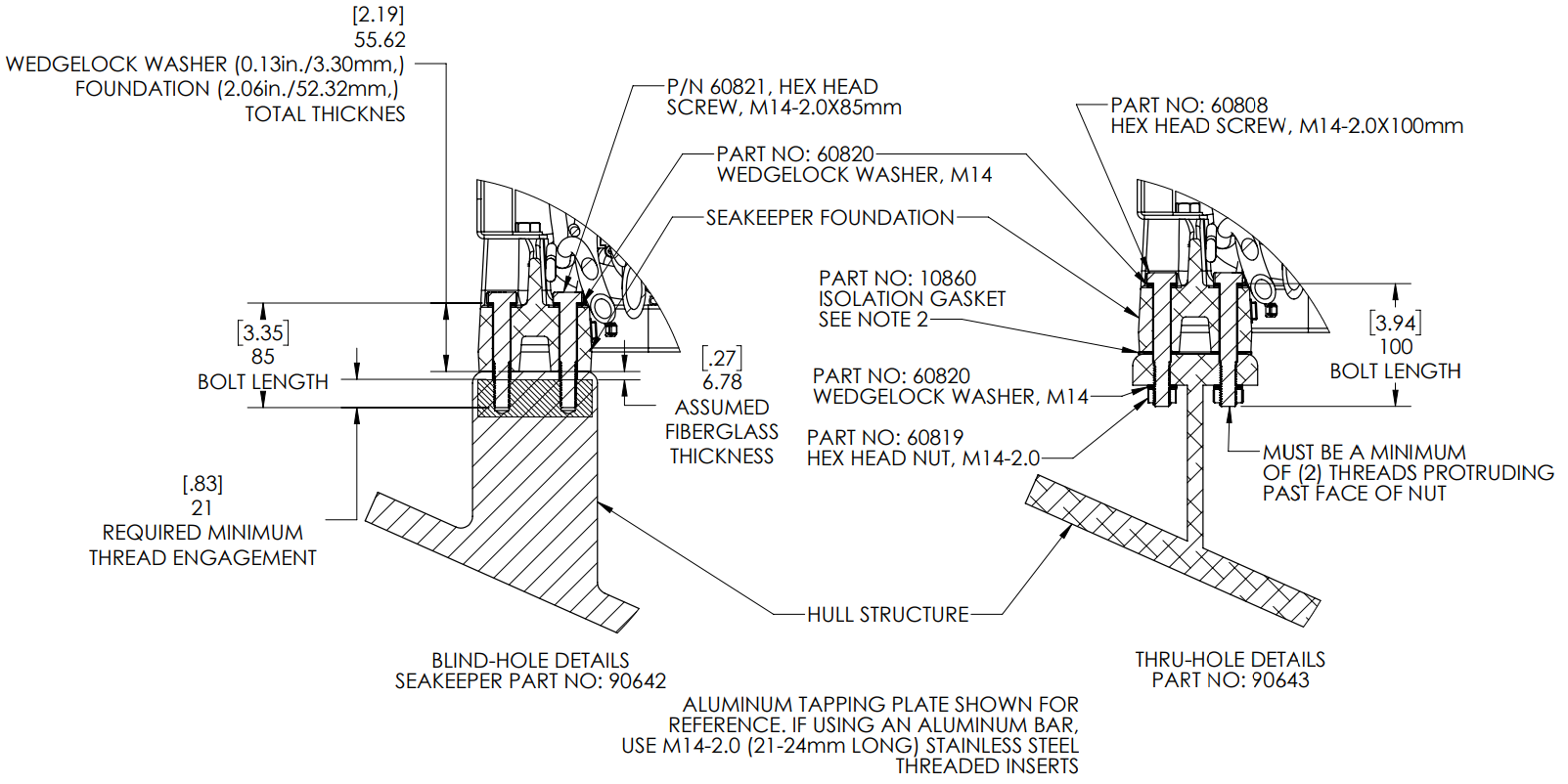
(Measurements in brackets are in inches; measurements not in brackets are in millimeters)
2.5 Bond-In Installation
2.5.1 Bond-In Installation Introduction
Seakeeper recommended adhesives are listed in TB-90382 – Structural Adhesives Recommendations. Seakeeper recommends using a structural adhesive with a lap shear strength of 2000 psi (13.8 MPa) or greater. Careful consideration should be exercised by the installer when selecting the appropriate adhesive, such as working time, material compatibility, and surface preparation are three important factors to consider. Proper surface preparation in accordance with the adhesive manufacturer’s recommendations prior to installation is critically important. Information regarding pot-life, structural properties and material compatibility can be found on the adhesive product’s technical data sheet (TDS). An etching/cleaning primer compatible with the adhesive should be used on all aluminum surfaces if recommended by the manufacturer. Typically, two-part methacrylate based adhesives are the best options for bond-in installations such as Plexus MA590 and Sci-GripSG300, which provide compatibility with aluminum and FRP substrates, adequate working time, and exceed the strength requirements. See Sheet 6 of Seakeeper Drawing No. 90226 – Seakeeper 9 Bond-In Installation Details for loads information and recommended adhesive properties.
2.5.2 Preparation of Hull Structure
Refer to Seakeeper Drawing No. 90226 – Seakeeper 9 Bond-In Installation Details. Important dimensional and load information is given in this drawing that will impact the design details of the structure that will receive the Seakeeper as well as selection of the adhesive to bond the Seakeeper into the hull.
The foundation “saddles” of the Seakeeper are designed to be bonded directly to the composite hull structure of the vessel to effectively distribute Seakeeper loads. A complete bond is required between the inside surface of the saddles and the hull structure. Seakeeper recommends having a minimum of 2.5 L / 0.66 gal of adhesive, on hand for installation. Number of cartridges required is determined by dividing total volume by cartridge volume. There is some adhesive waste as a part of the process so a good rule of thumb is to purchase 50% more adhesive than estimated volume to bond. Depending on conditions and adhesive used, two workers may be required to apply the adhesive at the same time to finish the installation before the adhesive starts to cure. To aid in determining the quantity of adhesive required, the interior surface area (bonding surfaces) of each saddle is 106 in.2 (684 cm2) for a total bonded surface area for all four saddles of 424 in.2 (2,736 cm2).
The hull structure supporting the Seakeeper should be installed so the Seakeeper is parallel to the waterline in the transverse direction and within 2 degrees longitudinally. The four areas on top of the beams that the saddles will bond to need to be co-planar within .13 in. (3 mm) for consistent adhesive bond gap. In addition, the four areas on top of the saddles on which the feet of the Seakeeper foundation will rest need to be co-planar within .06 in. (1.5 mm) to minimize potential distortion of Seakeeper support frame when installed.
Note that any paint or gel-coat present in bond area should be removed so that adhesive will bond directly to laminate fibers and resin.
Seakeeper provides an installation fixture template, P/N 90253, that locates the saddles at the proper spacing both in the forward-aft direction and the port-starboard direction. See Figures 11 & 12 below, and Figure 13 in the following section. Once assembled with the provided saddle fittings, the fixture can be used to check clearances and alignment of the hull structure. The fixture will allow the builder / installer to lay-up and adjust the foundation dimensions to create a low-clearance fit between the Seakeeper foundation saddles and the hull structure. Shear strength of the adhesive will be maximized if the cured thickness between the vessel structure and the Seakeeper saddles is at the thinner end of the adhesive manufacturer’s recommended range. Therefore, the fixture should be used to confirm that the overall dimensions of the foundations are square and level and that the adhesive gap is within Seakeeper’s recommended range of .04 in. to .13 in. (1 to 3 mm).
Note: Do NOT use the installation fixture to establish Seakeeper envelope dimensions. Refer to Drawing No. 90226 – Seakeeper 9 Bond-In Installation Details, for envelope dimensions. A 3-D model of the Seakeeper is available on the Seakeeper Technical Library (http://www.seakeeper.com/technical-library/) to aid in designing the Seakeeper foundation and the space around the Seakeeper.
NOTE: MAKE SURE NO OBSTRUCTIONS FROM THE HULL STRUCTURE CAN BE SEEN WITHIN THE INSIDE OF THE INSTALLATION TEMPLATE KIT (INSIDE THE MARKED RED LINES). SEE DRAWING NO. 90226 – SEAKEEPER 9 BOND-IN INSTALLATION DETAILS.
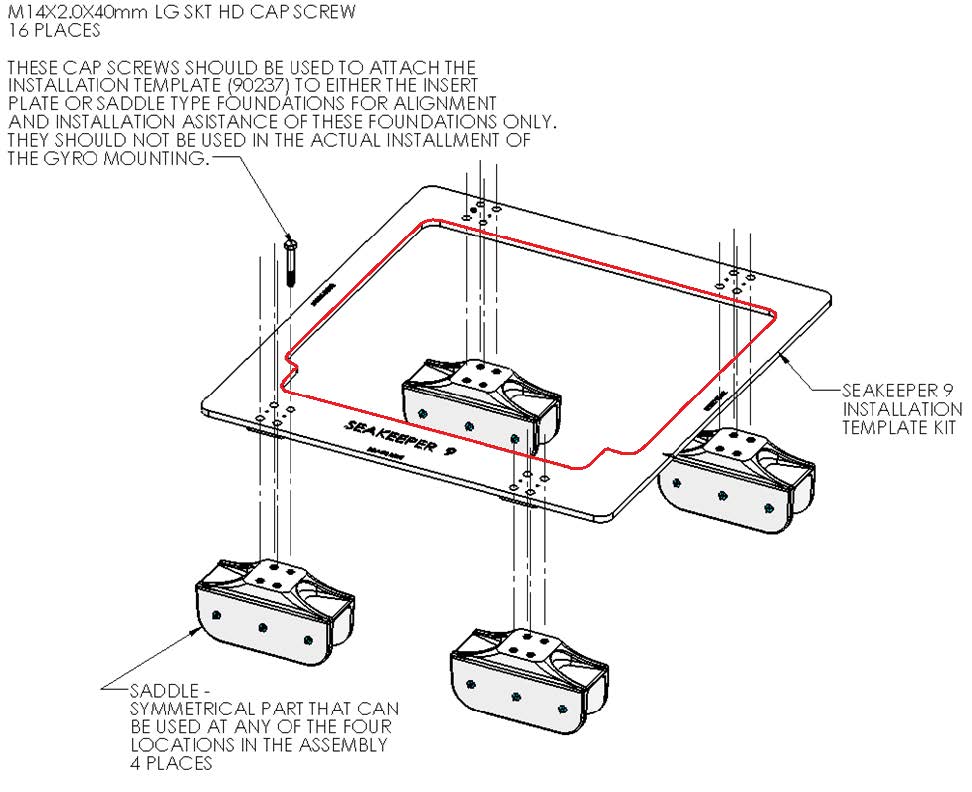
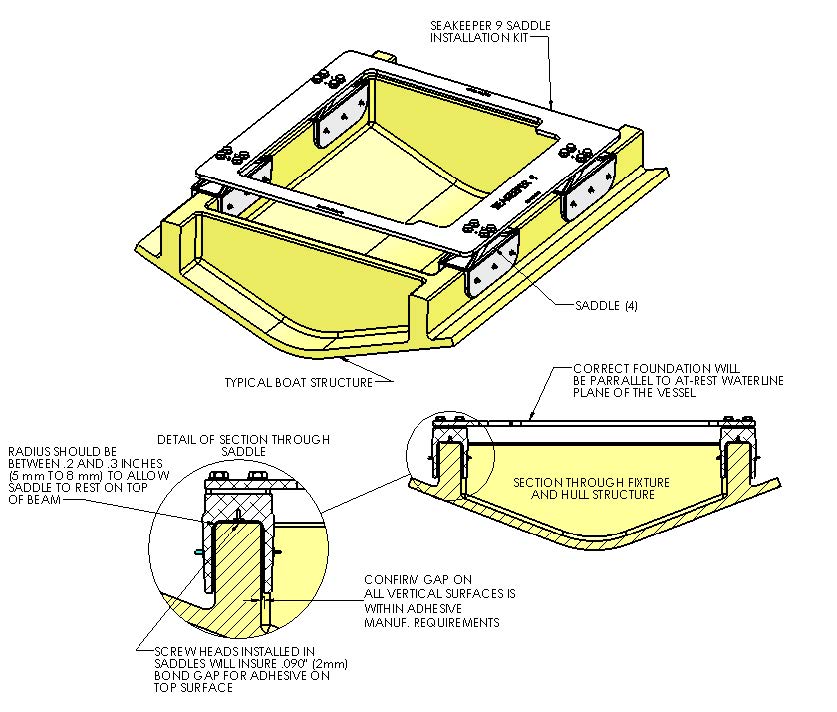
2.5.3 Hull Preparation
- Position installation fixture (Figure 13) on hull girders noting recommended clearances for maintenance from Figure 4 (in Section: Selection of Installation Location). Check that the screws fastening the saddles to the installation fixture are tight (Figure 14).
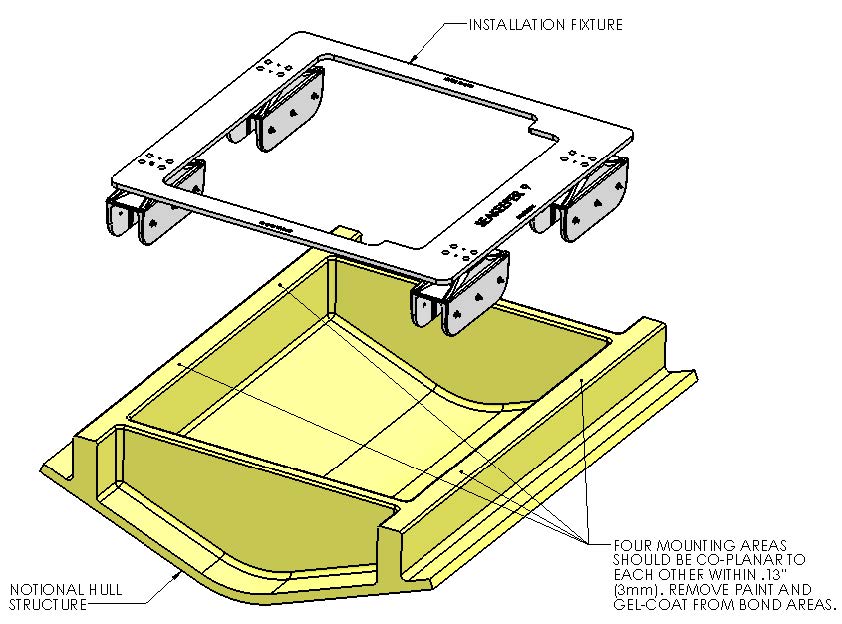
- Mask hull area (Figure 14) around foundation saddles for easy clean-up and to create outline of surface area to receive adhesive as (Figure 13). Ensure that the bond gap is within Seakeeper’s recommended thickness, or 3 mm if using Plexus MA590.
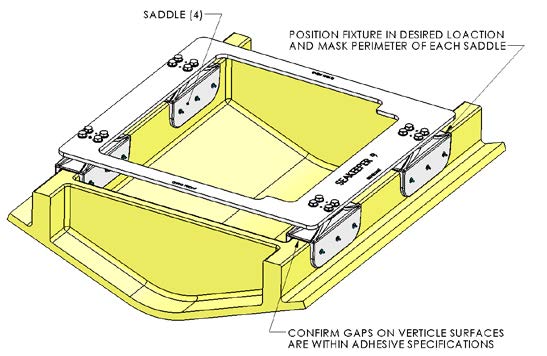
- Raise fixture clear of foundation. Check all four mounting areas are co-planar to within .13 in. (3 mm) to each other, as well as parallel to the water line plane, as shown in Figure 13 and 15.
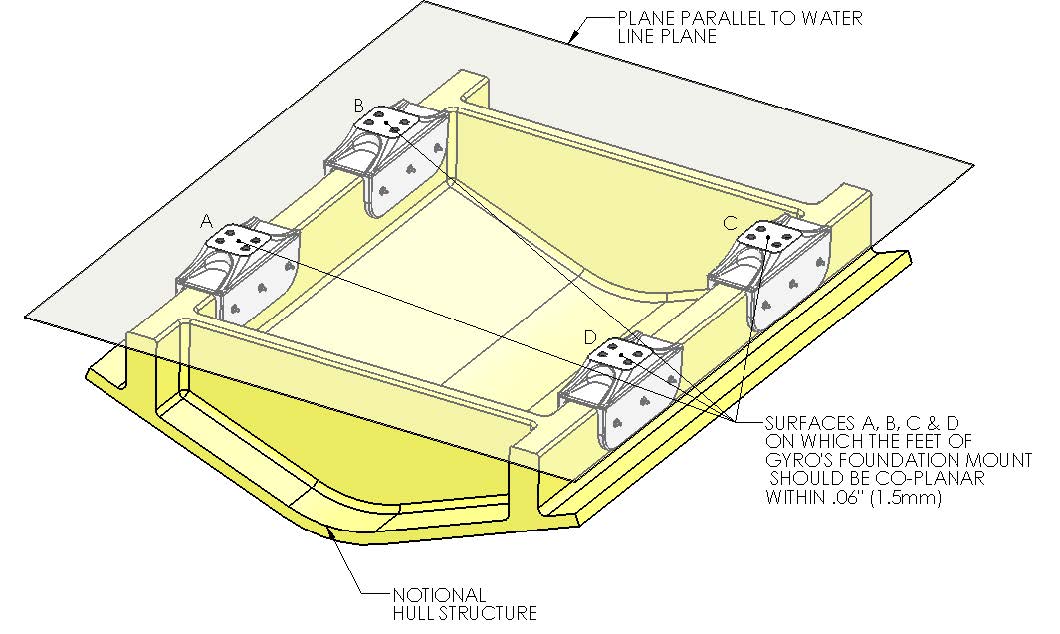
- Thoroughly clean with alcohol or acetone all areas of girders to be bonded to remove any contaminates. Use new paper towels for cleaning, not shop rags.
- Remove any paint or gel-coat from bond surfaces so that adhesive will bond directly to laminate fibers and resin as shown in Figure 15.
- Thoroughly sand girder bond surfaces with 80 grit sandpaper. (IMPORTANT – BOND STRENGTH MAY BE REDUCED IF THIS STEP IS SKIPPED.)
- Wipe surfaces clean from dust with alcohol or acetone using new paper towels, not shop rags.
- Re-position installation fixture on girders and double-check that the adhesive gap is within the adhesive manufacturer’s maximum recommended thickness. Seakeeper recommends a maximum gap of 3 mm if using Plexus MA590.
Note: if bonding saddles to a metal structure, follow adhesive manufacturer instructions for metal substrates.
2.5.4 Seakeeper Saddle Preparation
- Ensure that screws fastening saddles to the installation fixture are tight (Figure 14).
- Check that each saddle contains 2 plastic screws which will ensure an adhesive gap of .080 in. (2 mm) on top surface of hull as shown in Figure 16. Do not remove these screws.
- Thoroughly sand all saddle inside surfaces with 80 grit sandpaper in cross-hatch pattern. (IMPORTANT – BOND STRENGTH MAY BE REDUCED IF THIS STEP IS SKIPPED.)
- Thoroughly clean with alcohol or acetone the inside surfaces of Seakeeper foundation saddles to remove any contaminates as shown in Figure 16. Use new paper towels for cleaning, not shop rags.
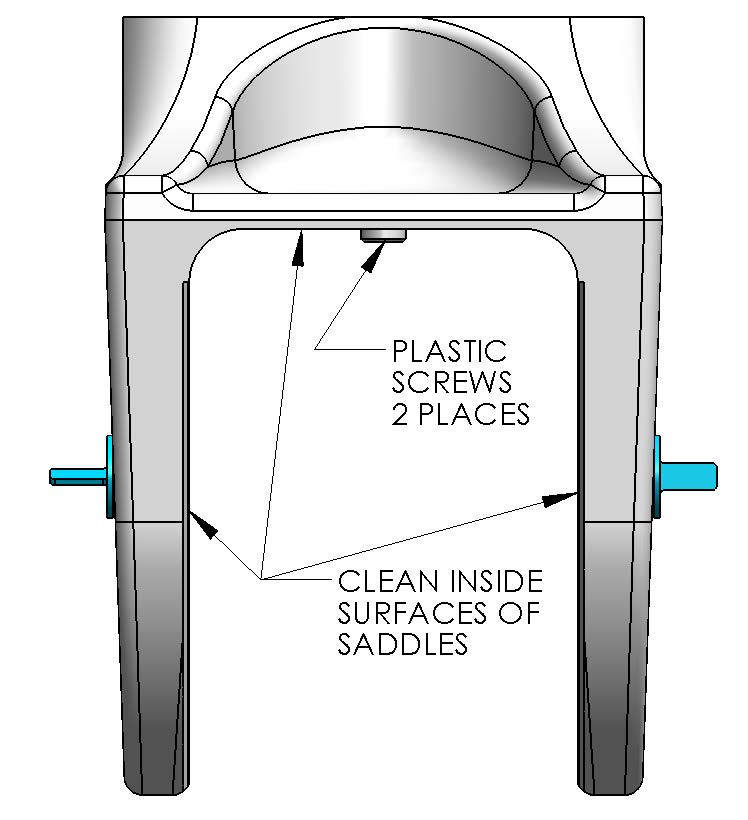
- If using Plexus MA590 adhesive, apply Plexus PC-120 surface conditioner to inside surfaces of Seakeeper foundation saddles in accordance with manufacturer instructions. These instructions are located at the end of this section. If using an alternate adhesive, check with manufacturer if any surface conditioner/etch is required for the aluminum saddles.
2.5.5 Bonding Saddles to Hull
Note: This is a sample if using Plexus, if using another adhesive follow manufacturer’s recommendations.
If using Plexus MA590 adhesive, the Seakeeper saddles should be installed when PC-120 is confirmed dry.
- Assemble Plexus cartridge into either the manual or pneumatic gun as shown. Remove cap on cartridge and attach mixing tip. For pneumatic gun, start with low air pressure and increase until desired flow rate is achieved.
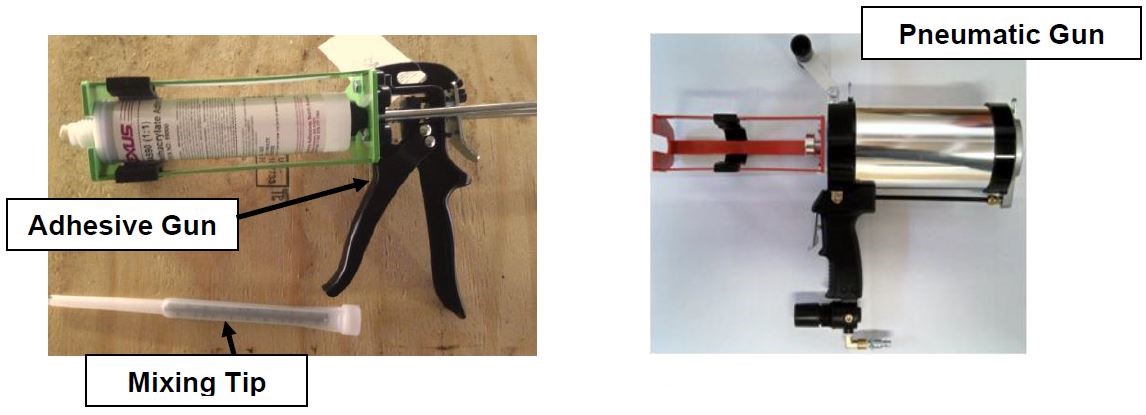
- Cut tip of mixing wand as shown in photo below.
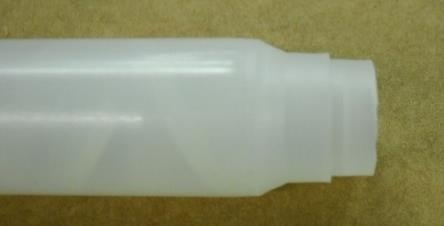
- Prepare a second mixing wand as shown in photo below by attaching the simple flexible nozzle to the end of the mixing tip. Set aside for now as this will be used to inject adhesive into the sides of each saddle after the fixture / saddles are in position.

- Install provided rubber plugs in six holes of each saddle. The plugs will limit the adhesive being forced out of the injection holes in step 6 below.
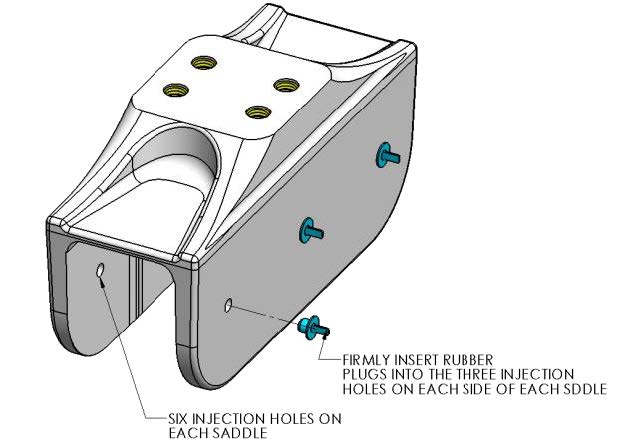
- Apply large bead of Plexus adhesive to the hull structure as shown in the figure to the right. Apply approximately ½ to ⅔ cartridges (200 – 275 mL) at each of the four locations. Work deliberate and fast as it takes some time to apply the adhesive to the structure. MA590 has a 90-minute working time at room temperature (73°F / 23°C). This working time can reduce to 40-50 minutes at elevated temperatures. Two workers should apply the adhesive at the same time to finish the installation before the adhesive starts to cure.
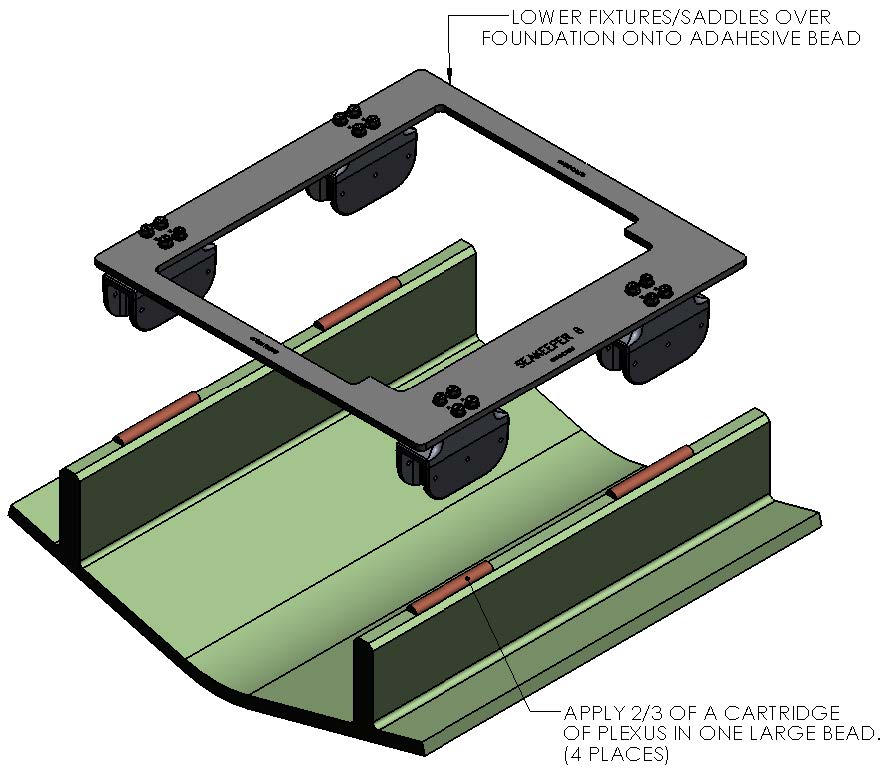
- Lower fixture and saddles over the hull structure and apply light downward pressure to each of the four saddles until the two nylon screws rest on the hull structure (see Figure 7). The adhesive will be forced towards the forward and aft ends of each saddle and partially down the sides of the foundation beams.
- Insert full adhesive cartridge along with mixing wand / nozzle assembled in Step 3 above into gun.
- Begin to inject adhesive into the six holes provided on each of the four saddles. Follow the numbered sequence shown below until the adhesive pushes out the edges of the saddle perimeter. The intent is to pump in the adhesive working from the top down and from the middle to the ends to fill the gaps and displace any air.
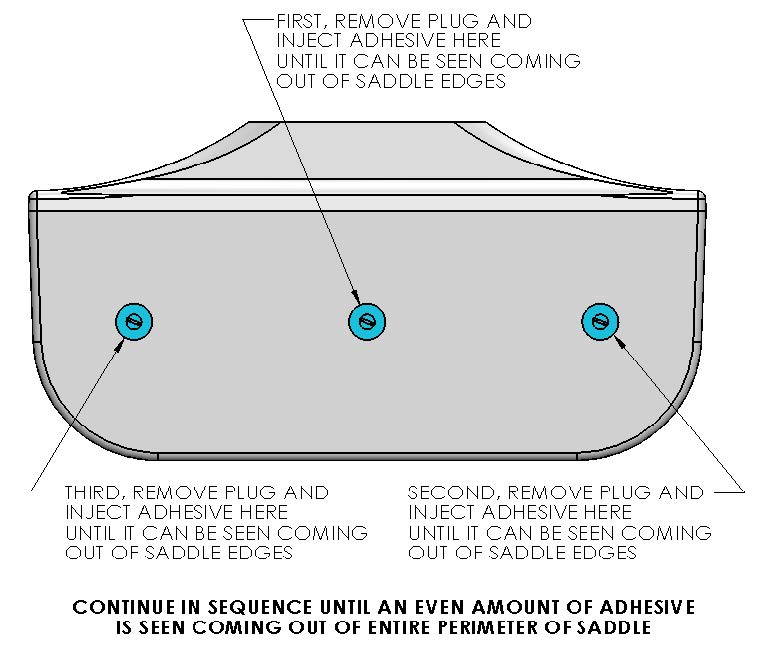
A complete bond is required – excess adhesive will
be needed to make sure all bond gaps are filled.
- When gaps of all four saddles have been completely filled, clean off excess adhesive, remove plugs, and remove masking tape.
- Allow adhesive to cure per manufacturer’s recommendations. Follow adhesive guidelines for curing time versus temperature prior to removing the fixture.
- Bonding of Seakeeper saddles onto the hull is now complete. Remove installation fixture.
2.5.6 Installation of Seakeeper

- The four areas where the feet of the Seakeeper will rest should be coplanar to within .06 in. (1.5 mm). See figure to the right.
- Rig Seakeeper for lifting and lower it into position onto top surface of four saddles.
- Apply a small bead (approximately 4 mm wide) of sealant or caulk to the mating surfaces between the saddles and the Seakeeper foundation. Adjust position of Seakeeper until alignment is achieved for the 16 fasteners that will attach the Seakeeper foundation frame to saddles.
- Install Seakeeper supplied Grade 8.8, M14-2.0 x 85 mm fasteners or alternative Grade M10.9, M14-2.0 bolts to maintain a minimum thread engagement of .084 in. (21 mm). Apply a moderate coat of nickel-based anti-seize (e.g., SAF-T-EZE nickel grade anti-seize, SBT-4N or equivalent) to the threads of each bolt and include a small bead of marine grade sealant (e.g., SILI-THANE 803 or equivalent) under each bolt head and washer before installation.
- Torque all fasteners to 100 ft-lbs (136 N-m).
- New bolts, matching the Seakeeper specification, must be used for each installation and reinstallation that meet the requirements listed above.
- Proceed to electrical and cooling portion of the installation.
3.0 Electrical Installation
3.1 Electrical Installation Introduction
This section for electrical installation explains how to mount the electrical equipment and how to connect the electrical cables.
Reference Documents & Drawings:
- 90221 – Seakeeper 9 Hardware Scope of Supply
- 90223 – Seakeeper 9 Operation Manual
- 90257 – Seakeeper 9 Cable Block Diagram
- 90438 – Touchscreen Display Envelope and Mounting Details
- 90467 – Seakeeper 5″ Display Kit
- TB-90640 – ConnectBox Connection Requirements
- TB-90896 – ConnectBox Installation Guide
- MFD Compatibility Technical Bulletins
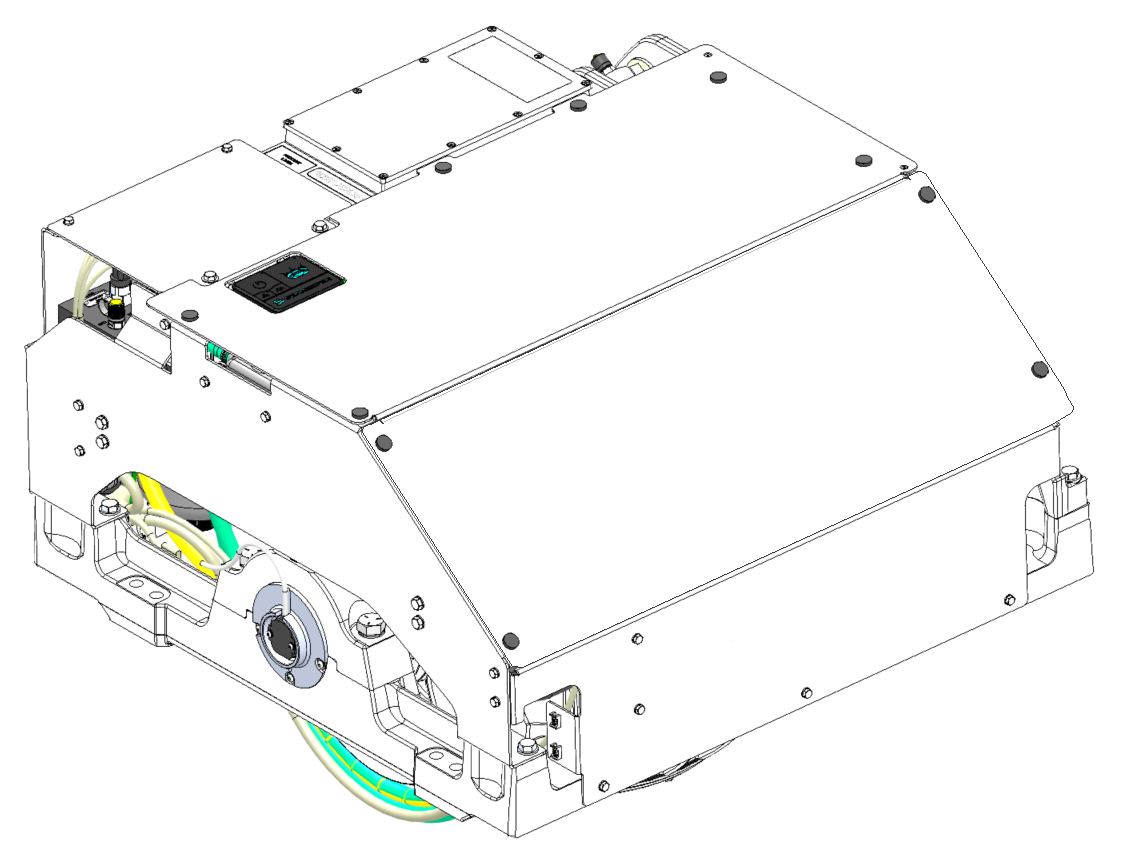

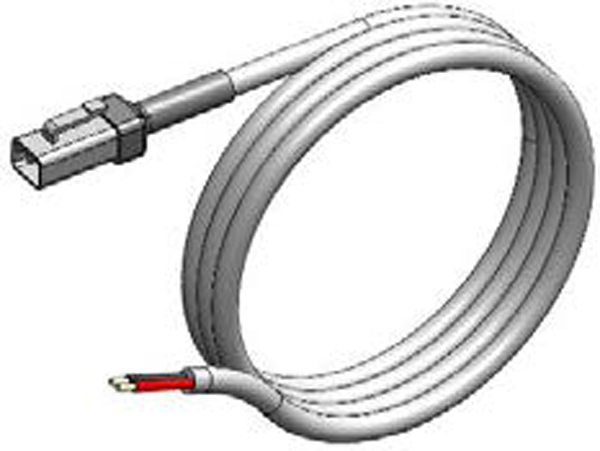
P/N 20248
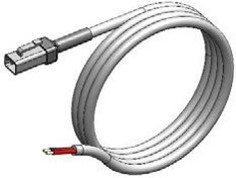
P/N 30327
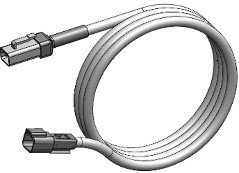
P/N 20334
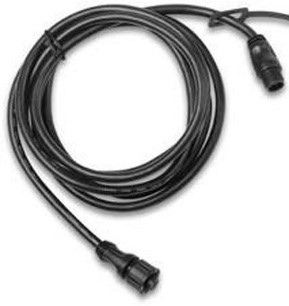
P/N 30332
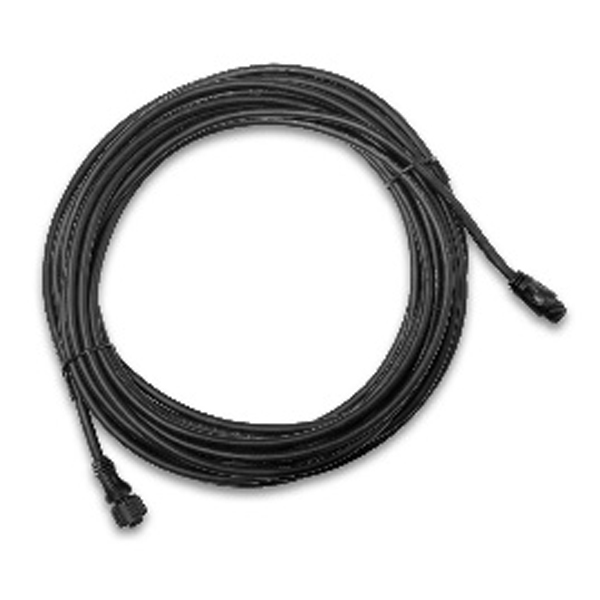
32,8 ft (10 m)
P/N 30330
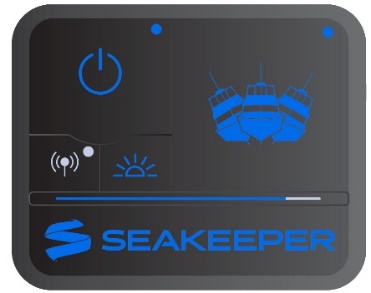
Figure 18 – Electrical Equipment for Seakeeper 9
3.2 Electrical Equipment Power Connections
230 VAC Power Source Requirements
- 230 VAC (nominal), 1 Phase, 50/60 Hz, 20 A
- For installations of more than one Seakeeper, a separate circuit breaker should be used for each Seakeeper Motor Drive Box.
Drive Box AC Power Input Connection Instructions
- 230 VAC Input Cable: 3 x 10 AWG (3 x 6 mm2 CSA), 10 ft. (3 m) length, Seakeeper supplied pre-installed.
- Locate 230 VAC Input Cable for AC power input to the Drive Box at the outboard of the Motor Drive Box cable glands.


Connections at AC Power Distribution Panel
- Connect 230 VAC Input Cable wires to a 20 A, double-pole Circuit Breaker at an AC power distribution panel according to Figure 20 above.
24 VDC Power Source Requirements
- One 24 VDC, 10 A (Customer supplied) for Seakeeper Control Power, AND
- One 24 VDC, 10 A (Customer supplied) for DC Seawater Pump.
- A separate breaker should be used for each Seakeeper.
DC Power Connection Instructions
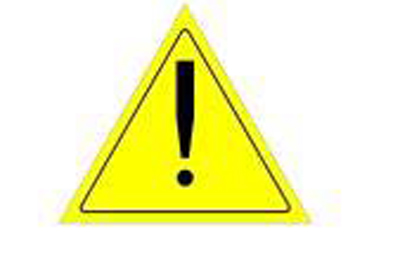
Reversing polarity on the DC power input to the Seakeeper can result in damaging the electronics in the control system.
- 24 VDC, 10 A, 2 x 12 AWG (3 x 4.0 mm2 CSA) customer supplied.
- Install Seakeeper provided DC Power Input Cable, P/N 20248 (as shown in Drawing No. 90257).
- Route 24 VDC Power Cable to DC Power Distribution Panel.
- Terminate positive (B+, Red ) conductor to +24 VDC.
- Terminate negative (B-, Black) conductor directly to battery negative terminal.
- Before connecting cable to Seakeeper, check for proper voltage and polarity with a DC multimeter using Figure 21 below.
- Connect 24 VDC Input Cable to 24 VDC input receptacle on Seakeeper.
- Install Seakeeper provided DC Power Input Cable, P/N 20248 (as shown in Drawing No. 90257).
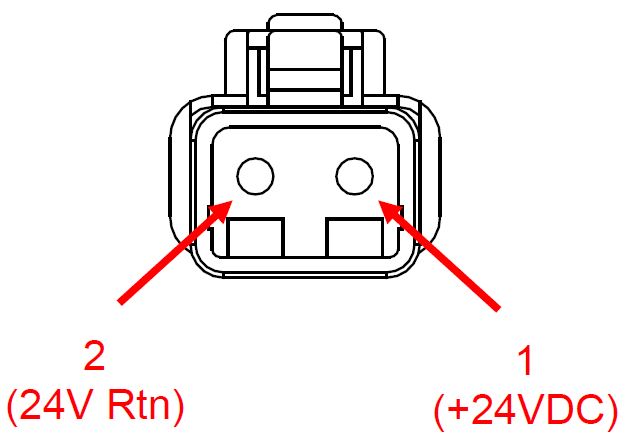
DC Seawater Pump 24 VDC Power Input Connection Instructions

Connecting the DC Seawater pump in any other manner than recommended by Seakeeper may cause internal failure.
- Install Seawater Pump Input Cable (P/N 30327) to Seakeeper 9 “SW Pump DC In” (as shown in Drawing No. 90257) with overcurrent protection corresponding to seawater pump selected.
- Connect the 16AWG positive conductor (Red) through dedicated overcurrent protection device (customer supplied), maximum of 10 A, to dedicated battery isolation switch.
- Connect the 16 AWG negative conductor (Black) directly to battery negative terminal or DC main negative bus bar.
- Before connecting Seawater Pump Input Cable to Seakeeper, check for proper voltage and polarity with a DC multimeter using Figure 8 below.

- Connect Seawater Pump Input Cable to Seawater Pump 24 VDC In connector on the Seakeeper, DEUTSCH DT04-2P connector.
DC Seawater Pump 24 VDC Power Output Connection Instructions
- Connect Seawater Pump Output Cable to the Seakeeper 9 “SW Pump 24VDC Out” for DC power to the seawater pump.
- Seawater Pump Output Cable is a 2 x 16 AWG cable, 16 ft (5m) length with a size 16 female Deutsch plug.
- Pumps rated at 24 VDC, 10 A maximum, customer-supplied, must be configured with a Deutsch DT series, 2-pin receptacle to mate with the connector shown in Figure 23.

- Seawater Pump Output Cable must be routed and installed in the vessel from the Seakeeper 9 “SW Pump 24VDC Out” Deutsch connector (pins end) to the DC seawater pump cable Deutsch connector (socket end).
- Connect Seawater Pump Output Cable plug end (socket end) to the customer-supplied receptacle end (pins end). The recommended wiring is shown in Figure 24.
- Contact Seakeeper if desired to install customer-supplied relay on Seawater Pump Output Cable to power seawater pump.

3.3 Electrical Equipment Ground Connections
Seakeeper to Vessel Ground Connection Instructions
- Connect the Seakeeper foundation to vessel ground, as shown in Figure 25.
- Install Ground Cable (10 AWG or 6 mm2, Customer supplied) from the M6 brass ground stud on the Seakeeper rear brace to a suitable vessel ground.
- EN/IEC 90204-1: 2016, Clauses 6.3.3 and 8.2.3
- ABYC E-11 July 2021, Clauses 11.5.2 and 11.17
- Ground connection should be made with vessel bonding system, if available. However, the ground is not referring specifically to a bonding system but for outboard boats generally refers to the outboard engine negative terminal. Per ABYC E-11 (2018), Clause 11.5.2.7.4: If the negative side of the DC system is to be connected to the ground, the connection shall be made only from the engine negative terminal, or its bus, to the DC grounding bus. This connection shall be used only as a means of maintaining the negative side of the circuit at ground potential and is not to carry current under normal operating conditions.
- A proper ground connection is critically important for corrosion protection and helps to ensure the ignition protection of the unit by ensuring it does not carry any stray current.
NOTE: THIS LOCATION SHOULD ONLY BE USED FOR GROUNDING THE SEAKEEPER TO THE VESSEL GROUND
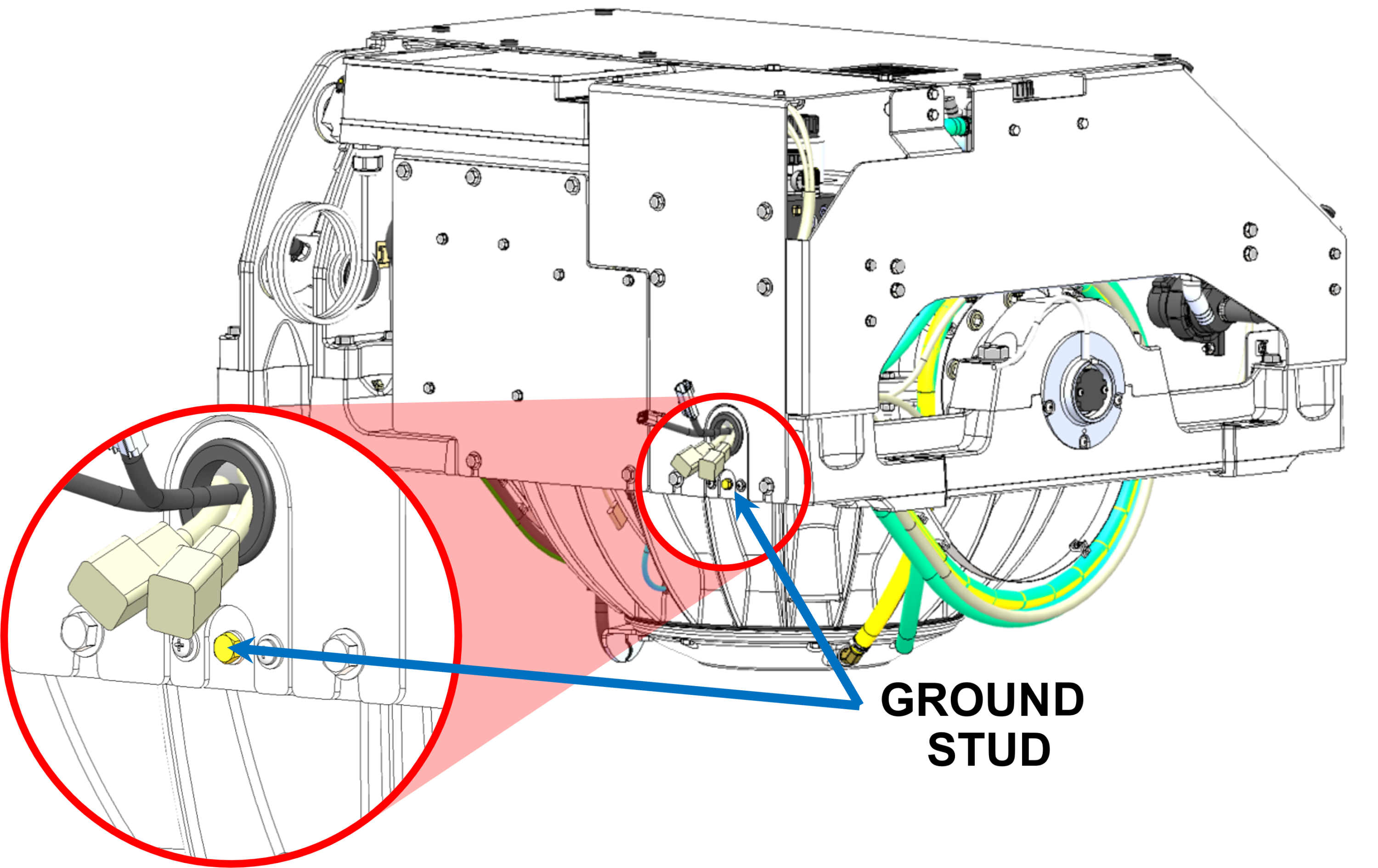
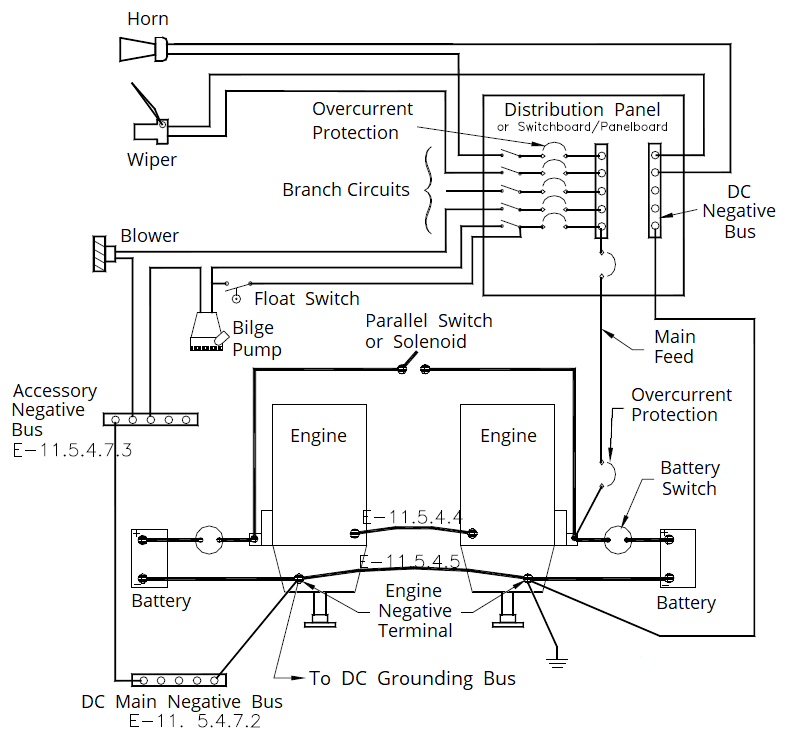
3.4 ConnectBox Connections
Seakeeper 9 Display Options
A compatible display is required with the installation of a Seakeeper 9 to support the full functionality of the unit through the Seakeeper App in addition to the ConnectBox. The Seakeeper App provides an interface for controlling the Seakeeper 9 or viewing the Settings, Service, Info, and Alarm pages. The Seakeeper ConnectBox can be helm-mounted to provide an additional interface for the control of the Seakeeper 9 but does not replace the need for a Seakeeper compatible display.
The Seakeeper 9 has several control interface connection options to support the Seakeeper App:
- Connect the Seakeeper 9 to a compatible Multifunction Display (MFD) as seen in Figure 26.
- Install an optional Seakeeper 5″ Touch Display (P/N 90467) as seen in Figure 27.
- A combination of a compatible MFD and an optional 5″ Touch Display is also available.
The following figures provide schematics of display options. The subsequent sections outline the instructions and references for connecting the Seakeeper 9 to a compatible MFD display or an optional Seakeeper 5″ Touch Display.


Connecting to a Compatible MFD
- The Seakeeper 9 can be connected to a variety of available MFD systems. Refer to the Technical Bulletins Section of the Seakeeper Technical Library for manufacturer specific MFD compatibility technical bulletins.
- MFD specific Technical Bulletins will be updated regularly as new MFD systems become available. Currently Garmin, Raymarine, NAVICO (Simrad, Lowrance, B&G), and Furuno offer compatible MFD models.
- Once a compatible MFD has been selected, refer to the appropriate manufacturer specific Technical Bulletin for integration instructions.
- Connect Seakeeper-supplied Ethernet Adapter cable, M12 D-Code, 82 ft (25 m), cable to MFD manufacturer-specific Ethernet adapter cable (See Figure 26 above). Custom Ethernet cables for specific MFD manufacturers are available through Seakeeper and must be purchased with the Seakeeper 9 when connecting to an MFD.
Connecting to an Optional Seakeeper 5″ Touch Display
If not utilizing a compatible MFD display, a Seakeeper 5” Touch Display must be purchased from Seakeeper. The Seakeeper 5” Touch Display (P/N 90467) includes the components shown in the following figure and will be integrated with the ConnectBox.
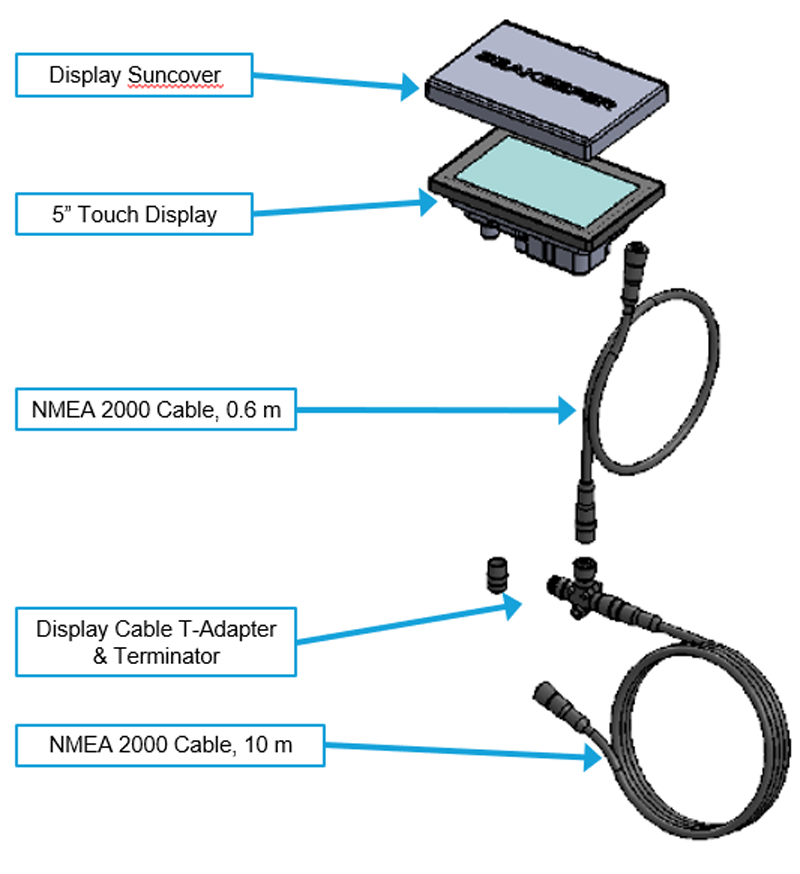
(P/N 90467)
- Determine location of Seakeeper 5” Touch Display:
- The desired location of the 5” Touch Display must be determined with respect to the vessel’s arrangement.
- The 5” Touch Display should be located on or near the helm or another easily accessible location.
- Route CAN communications cable:
- The CAN Cable, (labelled NMEA 2000 Cable in Figure 28), is a 10 m shielded cable that connects the ConnectBox Tee adapter to the 5” Touch Display.
- NOTE: Cable lengths are also available in 25, 35, 50, and 65 meters
- The 32.8 ft (10 m) CAN cable must be routed and installed in the vessel from the Seakeeper 9 wire harness CAN Tee to the Tee Adapter at the Seakeeper 5” Touch Display, included with P/N 90467.
- The CAN Cable, (labelled NMEA 2000 Cable in Figure 28), is a 10 m shielded cable that connects the ConnectBox Tee adapter to the 5” Touch Display.
- Install Seakeeper 5″ Touch Display equipment:
- Console space required: Approx. 5.24 W x 3.70 H in. (133 x 94 mm)
- Mounting Instructions, Surface Mount: see Envelope and Mounting Details, in Drawing No. 90438 – 5” Display Envelope and Mounting Details.
- CAN communications tee adapter and terminator mounting instructions:
- Console space required, Rear: Approx. 4 W x 3 H in. (102 x 76 mm)
- Mounting Instructions: Rear mount on vessel console panel, within 2 ft (0.6 m) of Display.
- Hardware required: One mounting screw for .197 in. (5 mm) diameter mounting hole on Tee Adapter.
- Connect Seakeeper 5” Touch Display Equipment:
- The Seakeeper 5” Touch Display is connected in accordance with Figure 27 above.
- The USB Extension Cable is 6.5 ft (2 m) long cable that enables software updating on a 5″ Touch Display where accessibility to rear panel is limited.
NMEA 2000 Network Connection
The Seakeeper 9 requires a connection to the vessel’s NMEA 2000 network backbone via a drop cable for access to the GPS signal. The Seakeeper 9 will monitor information on the NMEA network to support and optimize the performance of the Seakeeper 9. If no GPS signal is detected, a warning will appear on the Seakeeper display. The Seakeeper will not spool-down, but the operation of the unit will be limited until the GPS signal returns. Refer to TB-90896 – ConnectBox Installation Guide for details of installation.
- Install customer-supplied NMEA 2000 Tee Adapter (space required: approximately 4 W X 3 H in. (102 X 76 mm).
- Connect NMEA Backbone to Tee Adapter. NOTE: NMEA drop cable can be no longer than 19.6 ft (6 m) in length.
- ConnectBox can be remote mounted at a location closer to the NMEA backbone when the 6 m drop cable length is insufficient. See ConnectBox Helm Mounting instructions below.
- If a 19.6 ft (6 m) drop cable is insufficient in length, extend the NMEA 2000 backbone towards the ConnectBox.
- Connect Seakeeper-supplied NMEA cable (P/N: 30332) to the customer-supplied NMEA 2000 Tee Adapter on vessel’s NMEA 2000 backbone.
- An active NMEA 2000 compatible GPS signal is required on the vessel’s NMEA 2000 backbone to operate the Seakeeper 9.
- If no GPS signal is detected, a Speed Over Ground (SOG signal) warning will be present on the Seakeeper app. See TB-90640 for NMEA connectivity guidance.
- An active NMEA 2000 compatible GPS signal is required on the vessel’s NMEA 2000 backbone to operate the Seakeeper 9.
ConnectBox Helm Mounting – Optional
- Console space required: Approx. 3.41 L x 4.15 W in. (87 x 106 mm).
- Mounting Instructions, Surface Mount: See Drawing No. 90558 – Seakeeper ConnectBox Helm Mounting Kit, for details. Seakeeper ConnectBox 3D Model available upon request.
- Mount ConnectBox Replacement Blank insert into Seakeeper 9 enclosure at the original location of the ConnectBox.
4.0 Cooling Installation
4.1 Cooling Installation Introduction
Reference Documents & Drawings:
90257 – Seakeeper 9 Cable Block Diagram
90251 – Seakeeper 9 Cooling Water Schematic
30331 – Seakeeper DC Seawater Pump Assembly
TB-90947 – Seawater Plumbing Best Practices
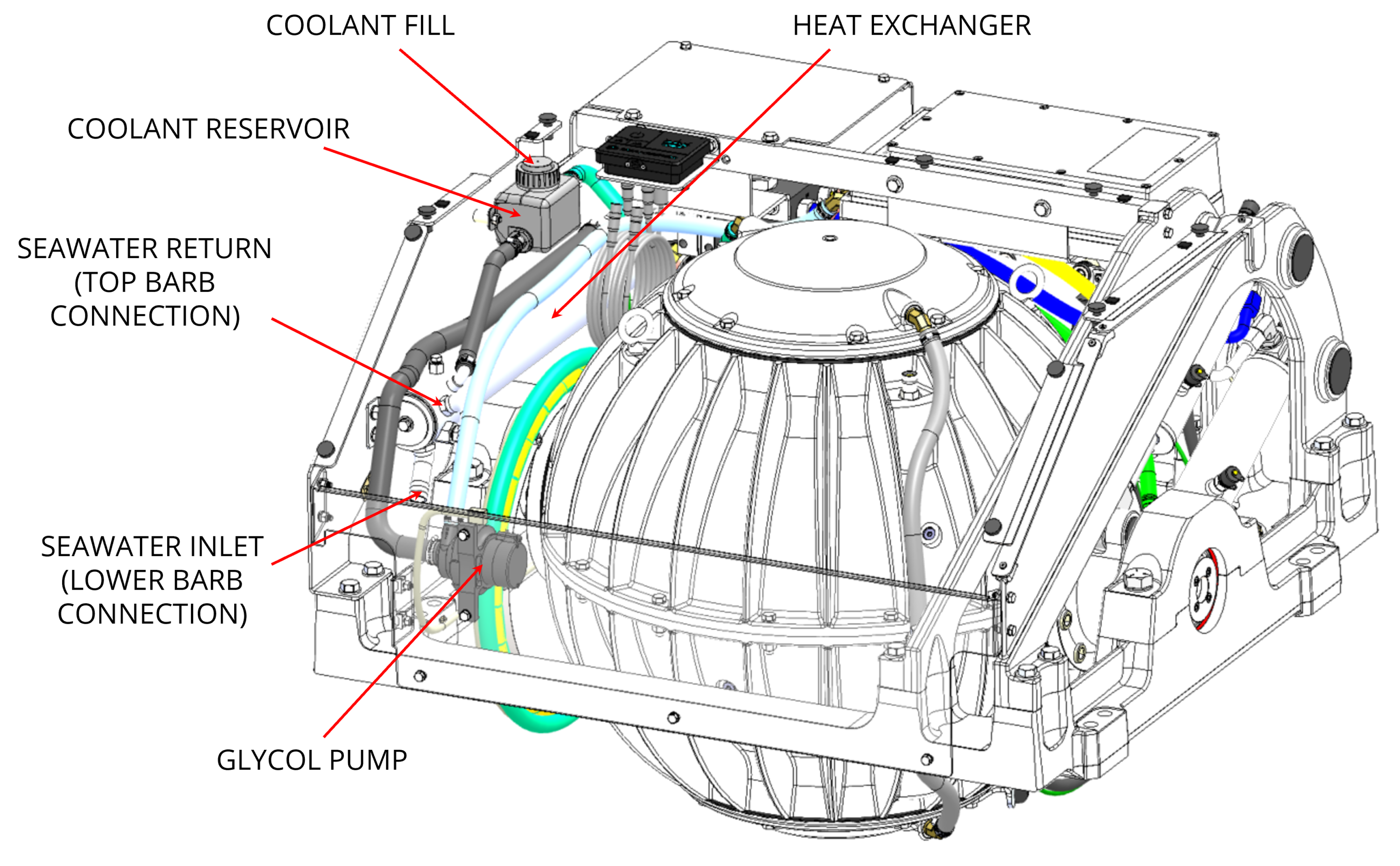
The Seakeeper 9 is shipped with the cooling circuit filled and ready for use (See Figure 29). The Seakeeper 9 requires connection to a raw water pump, referred to as the seawater pump, to cool the closed loop cooling circuit on the unit. The required seawater flow through the Seakeeper 9 heat exchanger is between 4 – 8 GPM (15.1 – 30.3 LPM) when the on-demand cooling system requires cooling. Prior to operation, confirmation of glycol level is recommended.
Seakeeper offers a compatible self-priming DC Seawater Pump (P/N 30331) prewired for the Seakeeper 9 Installation and covered under the standard Seakeeper warranty. The pump conforms to the seawater plumbing best practices noted in TB-90947. See Drawing No. 30331, SeaFlo® Seawater Pump Assembly, and the Seakeeper Options and Accessories Price List for details.

4.2 Cooling System Considerations
- The installer is responsible for supplying a dedicated positive-displacement seawater pump (or electric isolation valve and centrifugal pump) and associated plumbing. Seawater connections on the Seakeeper heat exchanger mate with ¾ in. (19 mm) hose. An optional seawater pump can be purchased through Seakeeper, P/N30331.
- The seawater pump is powered by “Cable 5″DC Seawater Pump Out” cable on the Seakeeper 9, as outlined in Electrical Installation Section.
- This pump must operate on 24 VDC, 10 A OR 12 VDC, 15 A power. Pumps requiring other voltages or higher current can still be controlled by using this supply to trigger an installer-supplied relay but a separate source of power must be provided.
- A dedicated through-hull fitting should be installed for each Seakeeper to ensure sufficient seawater flow to that unit onboard the vessel.
- It is recommended that the seawater pump is located below the waterline, as close to the vessel’s baseline as practically possible, to maintain positive inlet pressure on the pump in all operating conditions.
- A self-priming seawater pump may be required to maintain water flow in all underway conditions. Cavitation can occur at the seawater inlet and potentially cause an air-lock condition restricting seawater flow to the heat exchanger.
- Vented loops are optional and should only be considered with centrifugal style pumps. Self-priming or positive displacement style pumps do not require a vented loop, this includes Seakeeper P/N 30331.
- Maximum seawater pressure in heat exchanger is 20 psi (1.4 bar)
- Seawater flow requirement through heat exchanger is 4 GPM (15.1 LPM) minimum and 8 GPM (30.3 LPM) maximum under all operating conditions of the boat. When sizing the seawater pump, the installer should factor in losses for raw water plumbing. In addition to initial operation at the dock, new Seakeeper installations should be checked to be within the flow requirements while the vessel is at speed. Flows higher than 8 GPM (30.3 LPM) could affect heat exchanger life.
4.3 Connecting Seawater to Heat Exchanger
Refer to Figure 31 for typical Seakeeper 9 seawater plumbing arrangement.
- Connect seawater from installer-supplied pump to lower ¾ in. (19 mm) hose barb on heat exchanger. (See Figure 1) Use the same practices as other below waterline seawater plumbing. Required flow rate is 4 GPM (16 LPM) minimum and 8 GPM (30.3 LPM) maximum.
- Connect seawater discharge (upper hose barb) to overboard drain. (See Figure 29) Use the same practices as other below waterline seawater plumbing.
- In addition to initial operation at dock, new installations should be checked for minimum 4 GPM (16 LPM) flow while vessel is at speed and when backing down. If no other method of confirming flow is available, discharge line may be temporarily diverted to a bucket. Flow is calculated from time to fill a known volume. A self-priming seawater pump (customer/installer supplied) may be required due to installation location to maintain water flow in all underway conditions where cavitation near the intake may occur and potentially cause an air-lock condition restricting seawater flow to the heat exchanger.
- Inspect raw water plumbing after sea trial for any signs of leakage.
- Heat exchanger contains removable endcaps to provide access for cleaning the tube bundle.

Seakeeper Optional DC Seawater Pump (P/N 30331)
- Seakeeper offers a self-priming DC Seawater pump operated at 24 VDC for the Seakeeper 9 (Figure 32).
- The pump assembly is pre-wired for connection to Seakeeper 9 Seawater Pump Output Cable, “SW Pump Output” and includes a seawater strainer and various fittings. The pump specifications are as follows:
NOTE: Only use SeaFlo®-provided threaded fittings with DC Seawater Pump 30331.
| Volts | 24 VDC |
| Rated Flow | 5.5 GPM (nominal) |
| Overcurrent Protection Rating | 15 A |
| Ignition Protection | ISO 8846 or equivalent |

4.4 Adding Coolant
- Cooling system is filled to proper level when shipped, with a mixture of 50% ethylene glycol and 50% distilled water. The reservoir and clear tube between heat exchanger and reservoir should be filled with green coolant mixture, as shown in Figure 33. If level has dropped, check for evidence of leaks at all connections before adding fluid as described below. If coolant is at the correct level, skip to Section: Connecting Seawater to Heat Exchanger.
- Note: Some amount of entrained air in the fluid is normal and acceptable. This air will be evident by some cloudiness of the fluid. As long as the fluid remains at the specified fill level during operation, the remaining cloudiness is not an issue.

- Mix 50% ethylene glycol with 50% distilled water in a clean container. Refer to Table 1 or glycol manufacturer’s literature for freezing points.
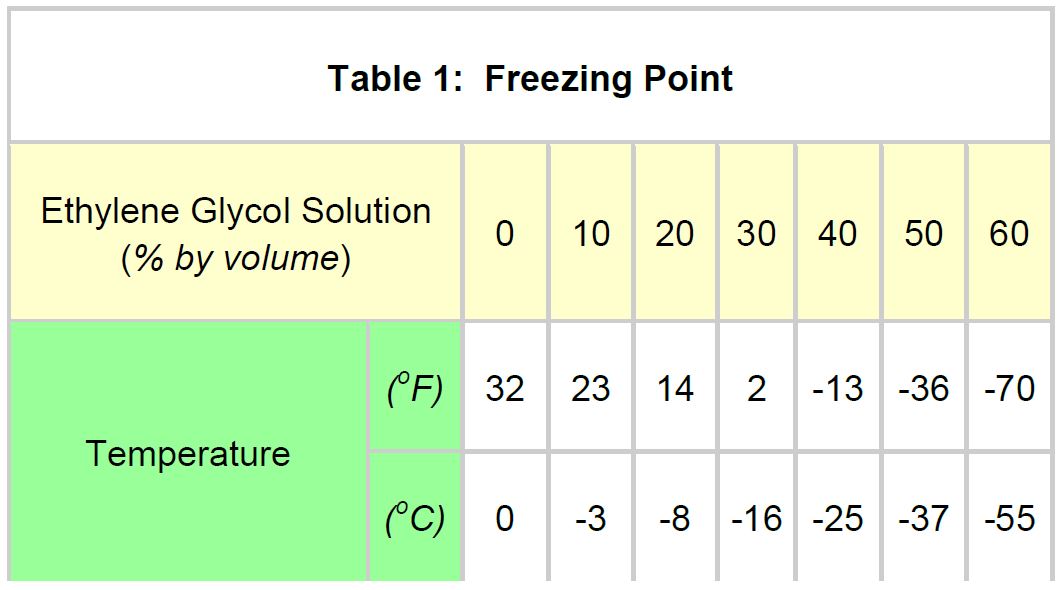
- Remove vent cap on top of reservoir. Pour mixture in until level reaches 2/3 reservoir as shown in Figure 33. Filling reservoir above this level will not cause any damage but coolant may be expelled from vent on top of cap due to normal thermal expansion of coolant.
- Connect 24 V to controller.
- At the MFD app / optional 5″ Touch Display check for any ALARMS
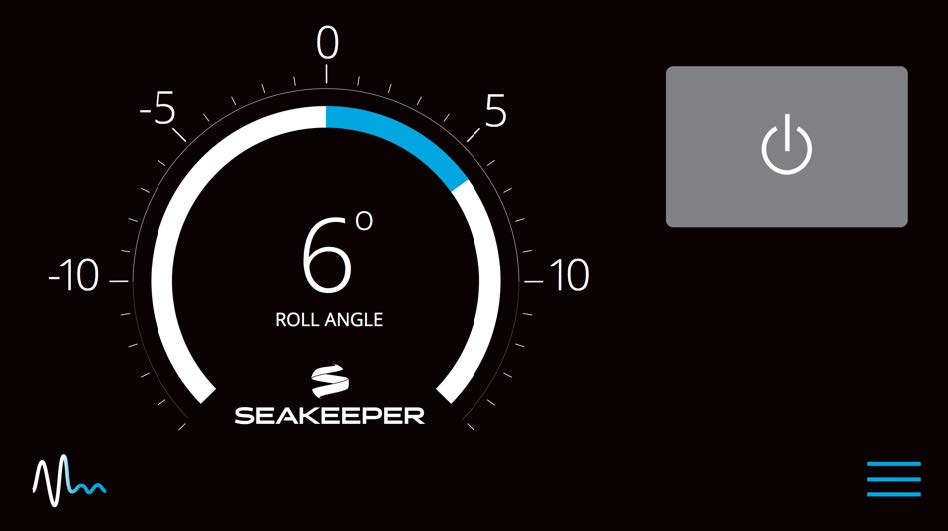
- Press the POWER ON/OFF button.

- The flywheel will start to spin and the glycol pump will start.
- Recheck glycol level with fluid circulating in coolant circuit. Sight down inside reservoir and check that coolant level is above upper port on reservoir as shown in Figure 4. Replace cap.
- After several minutes of running, press POWER ON/OFF button
 to turn power off to the flywheel.
to turn power off to the flywheel.
- At the MFD app / optional 5″ Touch Display check for any ALARMS
- The cooling system is self-purging. If small amounts of air are in the system, they will most likely be dislodged during the first sea trial. Re-check glycol level after sea trial and add fluid if required.
5.0 Installation Requirements
5.1 Installation Requirements Introduction
The Installation Requirements section outlines the components and tools needed for the Seakeeper 9 installation that are not included within the scope of supply.
5.2 Required Supplies and Tools for Installation
5.2.1 Required Supplies Needed for Seakeeper Installation
(Not Supplied with the Seakeeper)
| Item | Description | Qty | Installation Manual Reference Section | Other Reference | System |
|---|---|---|---|---|---|
| 1 | Adhesive and cleaning supplies for bonding to hull | AR | Mechanical Installation | Mechanical | |
| 2 | Soundproofing Considerations | AR | Selection of Installation Location | Mechanical | |
| 3 | Spreader bar for lifting Seakeeper | 1 | Transport and Unpacking | P/N 11015 | Mechanical |
| 4 | Threaded insert: M14-2 x 1.5DIA (21 mm) | 16 | Mechanical Installation | Dwg 90255 | Mechanical |
| 5 | Marine Sealant | AR | Mechanical Installation | Dwg 90255 | Mechanical |
| 6 | Nickel-Based Anti-Seize (SAF-T-EZE SBT-4N, or similar) | AR | Mechanical Installation | Dwg 90255 | Mechanical |
| 7 | Circuit Breaker, AC, 2-Pole, 20 A | 1 | Electrical Equipment Power Connections | Dwg 90257 | Electrical |
| 8 | Circuit Breaker, DC, 1-Pole, 10 A, Gyro Controller | 1 | Electrical Equipment Power Connections | Dwg 90257 | Electrical |
| 9 | Circuit Breaker, DC, 1-Pole, 15 A max, Seawater Pump | 1 | Electrical Equipment Power Connections | Dwg 90257 | Electrical |
| 10 | M6 terminal lug for grounding Seakeeper at rear brace | 1 | Electrical Equipment Ground Connections | Dwg 90257 | Electrical |
| 11 | Marine Cable, Green, 10 AWG, Cable 6 ground connection (used with item 11) | AR | Electrical Equipment Ground Connections | Dwg 90257 | Electrical |
| 12 | Seawater pump, 24 VDC | 1 | Electrical Equipment Power Connections | Dwg 90257 | Electrical |
| 13 | Relay for seawater pump control (Not required if using 24 VDC pump) | 1 | Electrical Equipment Power Connections | Electrical | |
| 14 | Compatible MFD or Optional Seakeeper 5″ Touch Display | 1 | Electrical Equipment Power Connections | Dwg 90257 | Electrical |
| 15 | Through-hull fittings (1 pick-up, 1 overboard discharge) | 2 | Cooling Installation | Dwg 90251 | Cooling |
| 16 | Seacock Valve | 1 | Cooling Installation | Dwg 90251 | Cooling |
| 17 | Seawater Strainer (Included with Seakeeper Seawater Pump P/N 30331) | 1 | Cooling Installation | Dwg 90251 | Cooling |
| 18 | 3/4 in. ID Seawater Hose | AR | Connecting Seawater | Dwg 90251 | Cooling |
| 19 | Hose clamps for seawater plumbing to ¾ in. (19 mm) hose barb (2 per hose barb) | AR | Connecting Seawater | Dwg 90251 | Cooling |
AR = As Required
Dwg = Drawing
5.2.2 List of Common Tools That May Be Required for Installation
| Item | Description | Use |
|---|---|---|
| 1 | Wire cutter | DC Power, AC Power cables |
| 2 | Wire stripper | DC Power, AC Power cables |
| 3 | 13 mm Socket | Side Panels |
| 4 | 24 mm Socket | Foundation bolts |
| 5 | 3 mm hex key | Gimbal sensor mount plate |
| 6 | 2.5 mm hex key | Gimbal angle sensor |
| 7 | ¼ in. Nut Driver | Hose clamps |
| 8 | Terminal or quick disconnect crimper | Power cables |
| 9 | Utility Knife | Scoring cable jackets |
| 10 | 10 mm Socket | Ground Stud and side panels |
| 11 | Hoist, Forklift, or Crane | Unpacking and lifting Seakeeper 9 into position |
| 12 | Drill / Drill Press | Bolt hole penetrations for bolt-in installations |
| 13 | Threaded Insert Installation Kit | Tap and install threaded inserts for bolt-in installation |
| 14 | 1/2″ Drive Torque Wrench | Foundation bolts |
| 15 | Fish Tape | Cable pulls |
| 16 | Hole Saw | Thru-hull fittings |
6.0 Installation and Start Up Checklist
6.1 Checklists Introduction
This section describes the first startup of the Seakeeper.
Reference Documents & Drawings:
- 90223 – Seakeeper 9 Operation Manual
- 90437 – Seakeeper Commissioning Form
- 90569 – Seakeeper ConnectBox and App Quick Start Guide
- SWI-105 – Commissioning Checklist

- Previous sections for mechanical, electrical and cooling installation must be completed before this startup sequence is initiated.
- Before continuing, covers must be installed unless the Seakeeper is inaccessible and there is no risk to injury. Also, the area around the Seakeeper must be clear of personnel and equipment.
The Installation and Start Up Checklist section provides an overview of the primary steps covered in the installation manual and should be referenced throughout the installation process. Upon completion of the
Seakeeper 9 installation, the installer should commission each Seakeeper unit with the Seakeeper Commissioning Form (90437). The Commissioning Checklist Work Instruction (SWI-105) provides a checklist of items to inspect and verify during the commissioning process and serves as a supplement to the Seakeeper
Commissioning Form (90437).
All Seakeeper stabilizers should be commissioned to verify installation specifications and requirements have been implemented properly. The commissioning process should include completion of the Seakeeper
Commissioning Form (90437), all the items in the Installation Checklist, and verification of Seakeeper operation without alarms or abnormal behavior.
6.2 Installation Checklist
Please Complete Checklist and E-mail to
customerservice@seakeeper.com or telefax to +1.410.326.1199
5.1.1 Mechanical Checklist
(Reference Installation Manual Section: Mechanical Installation)
_____ Seakeeper foundation installed in hull
_____ Foundation bolts torqued to specification
5.1.2 Electrical Checklist
(Reference Seakeeper Drawing No. 90257 – Seakeeper 9 Cable Block Diagram & Installation Manual Section: Electrical Installation)
Mount Components
_____ Display (near helm)
Connect Customer Supplied Cables
Seakeeper Ground Cable (Customer supplied)
_____ Install lugs on both ends of customer-supplied 10 AWG (6 mm2) ground cable
_____ Connect one end of ground cable to nearest vessel ground and other end to Seakeeper 9 rear
brace
Connect Seakeeper Supplied Cables
Control Power Cable
_____ Connect control power cable from Seakeeper to 24 VDC power at customer-supplied connection
box or directly to circuit breaker
_____ Plug connector of control power cable into mating connector on Seakeeper wire harness
AC Input Cable
_____ Connect AC input cable from Drive Box to 230 VAC single phase at customer-supplied connection
box or directly to circuit breaker
DC Seawater Pump Power Cable
_____ Connect DC seawater pump power input cable from Seakeeper to 24 VDC /10 A power at customer-
supplied connection box or directly to circuit breaker
_____ Plug connector of DC seawater pump power cable into mating connector on Seakeeper wire
harness at DC SW Pump In
DC Seawater Pump Output Cable
_____ Connect seawater pump output cable from DC SW Pump Out to 24 VDC seawater pump
MFD Ethernet Adapter Cable
_____ Connect male end of ethernet adapter cable to Ethernet connection on ConnectBox
_____ Route ethernet adapter cable to selected MFD compatibility cable towards helm
_____ Connect female end of ethernet adapter cable to MFD compatibility cable
_____ Connect MFD compatibility cable to MFD Display
OPTIONAL Seakeeper 5″ Display CAN Cable
_____ Connect female end of CAN communication cable to tee-adapter at ConnectBox
(at tee-adapter terminal resistor)
_____ Route CAN communication cable to Seakeeper 5″ display
_____ Connect male end of CAN communication cable to tee-adapter with terminal resistor at 5″ display
5.1.3 Cooling Checklist
(Reference Installation Manual Section: Cooling Installation)
_____ Verify coolant level in coolant reservoir
_____ Connect seawater hoses / open sea cocks to heat exchanger and test seawater pump
_____ Verify 4 GPM (15 LPM) minimum and 8 GPM (30 LPM) maximum seawater flow through heat
heat exchanger under all operating conditions of the boat
5.1.4 Start Up Checklist
(Reference Installation Manual Section: Start Up & Operation Manual Section: System Operation)
_____ Remove lifting eyebolts and install cover panels
_____ Turn on 24 VDC circuit breakers
_____ Turn on 230 VAC circuit breaker
_____ Verify display works and no ALARMS are present
_____ If display does not work, turn off both circuit breakers immediately
_____ Check polarity of 24 VDC power per Section 3.4
_____ Follow instructions in Installation Manual Section: Start Up Instructions to turn on the Seakeeper
_____ Verify seawater pump turns on while the Seakeeper is turned ON
_____ Verify no ALARMS are present
_____ Follow instructions in Installation Manual Section: Startup Instructions to turn off the Seakeeper
_____ AC & DC power and seawater pump may be turned off after the Seakeeper is turned off by placing the
Seakeeper in LOCK mode and turning the Seakeeper off
_____ Seakeeper 9 takes 4+ hours to coast down to 0 RPM from full speed
6.3 Start Up Checklist
Refer to Seakeeper 9 Operation Manual for detailed start up instructions.

Prior to beginning the start up sequence all previous Sections of the Installation Manual for Mechanical, Electrical, and Cooling installation must be complete.
Before continuing, the Seakeeper cover must be installed and the operating clearances must be clear of personnel and equipment.
| CHECK | REQUIREMENT TO BE MET |
| Remove lifting eyebolts and install sealing bolts and flat washers into lifting eyeholes and install top cover panels. | |
| Supply 230 VAC to Motor Drive Box at customer-supplied electrical disconnect. | |
| Energize control power and seawater pump breaker. | |
| Verify ConnectBox and MFD / 5″ Touch Display is active and no alarms present. | |
| Override seawater pump “ON” for 5 seconds) and verify flow at seawater outlet. (To activate override, at 0 RPM flywheel speed, hold down SERVICE button wrench icon for 5 seconds to reveal override screen) | |
| Deactivate seawater pump when completed obtaining seawater flow rate. | |
| Press Seakeeper ON/OFF Button and follow instructions in Seakeeper Operation Manual for complete start-up instructions. | |
| Verify no alarms are present. | |
| Power Seakeeper down, the Seakeeper flywheel will take 4+ hours to coast down to 0 RPM. |
7.0 Revision History
| REVISION | DESCRIPTION | DATE |
| 1 | Initial release | 21APR2014 |
| 2 | Added isolation gaskets, removed PN 90264 (insert plate), added detail on drilling/tapping | 09OCT2014 |
| 3 | Minor edits | 09FEB2015 |
| 4 | Adhesive tip clamp removed, removed Plexus instructions, removed flush mount display instructions, display template change | 06MAR2015 |
| 5 | Saddle surface bonding area changed, reinserted plexus details, minor edits throughout | 01JUN2015 |
| 6 | Added 7HD, removed word gyro from body, Fixture plate changed (hole dia.), Plexus alternative offered, minor edits throughout | 26JAN2017 |
| 7 | Removed Plexus details, 5″ Touch screen intro | 20OCT2017 |
| 8 | Minor edits, replaced images of Pan World glycol pump | 02JUL2021 |
| 9 | Updated address, added installation dwg references, clearance changes, thru-bolt added | 24SEP2021 |
| 10 | Added updated cooling system. Deleted 7HD model. Added FRB changes. Minor edits throughout document. | 08MAR2023 |
| 11 | Added ConnectBox user interface. Removed 5″ Touch Display from Bill of Materials. Minor format edits throughout manual. Added crate stacking recommendations. | 25SEP2023 |